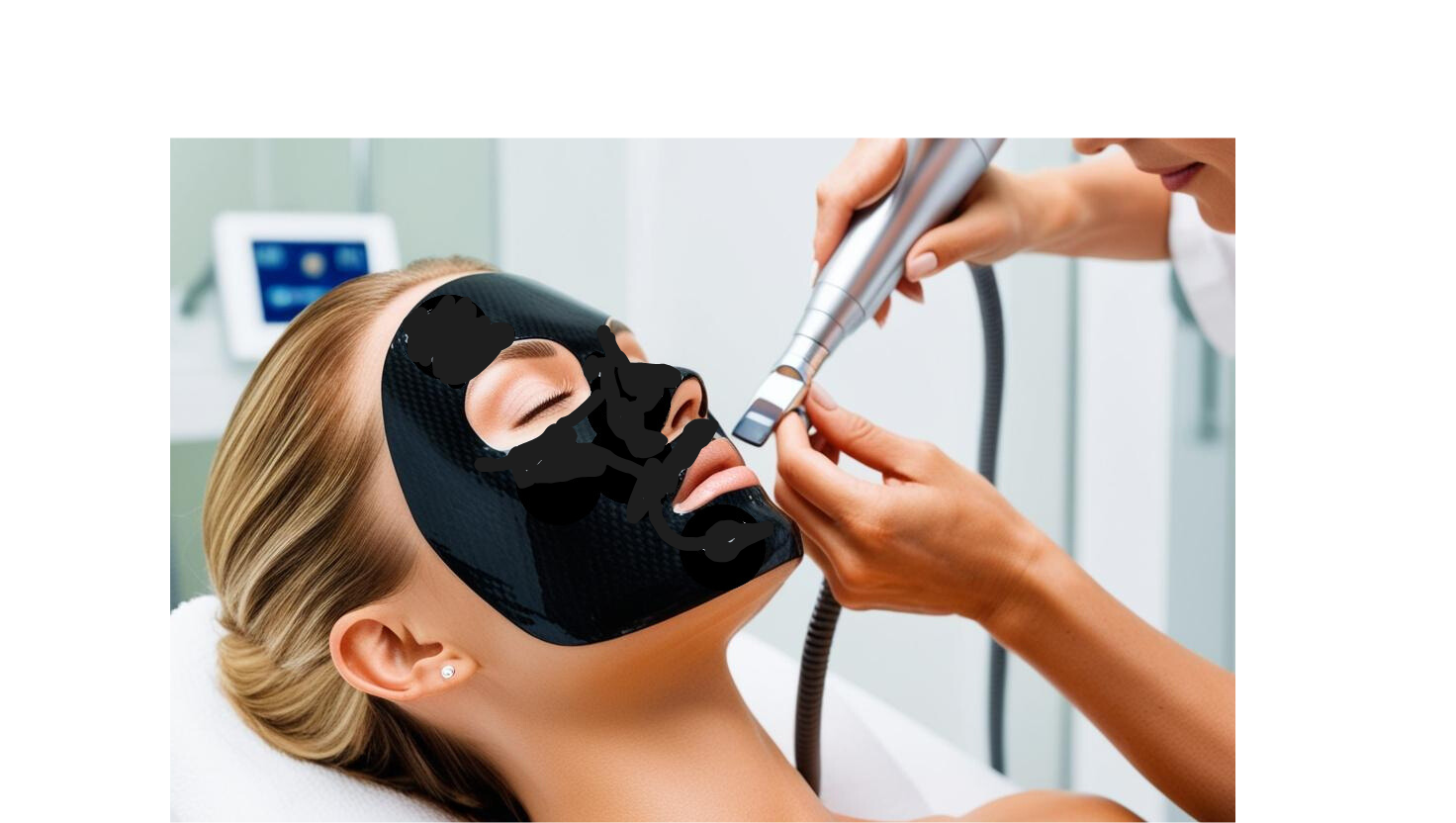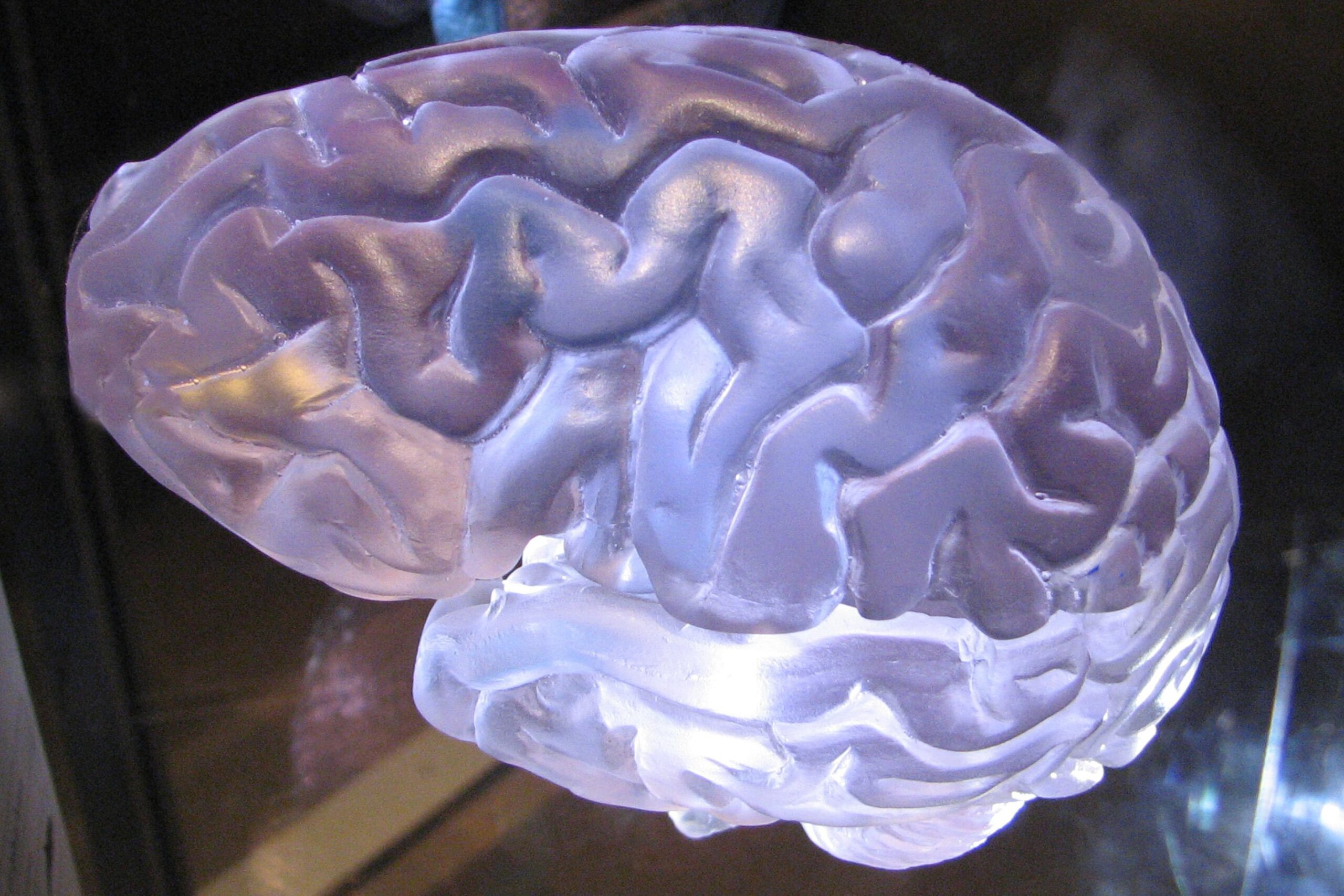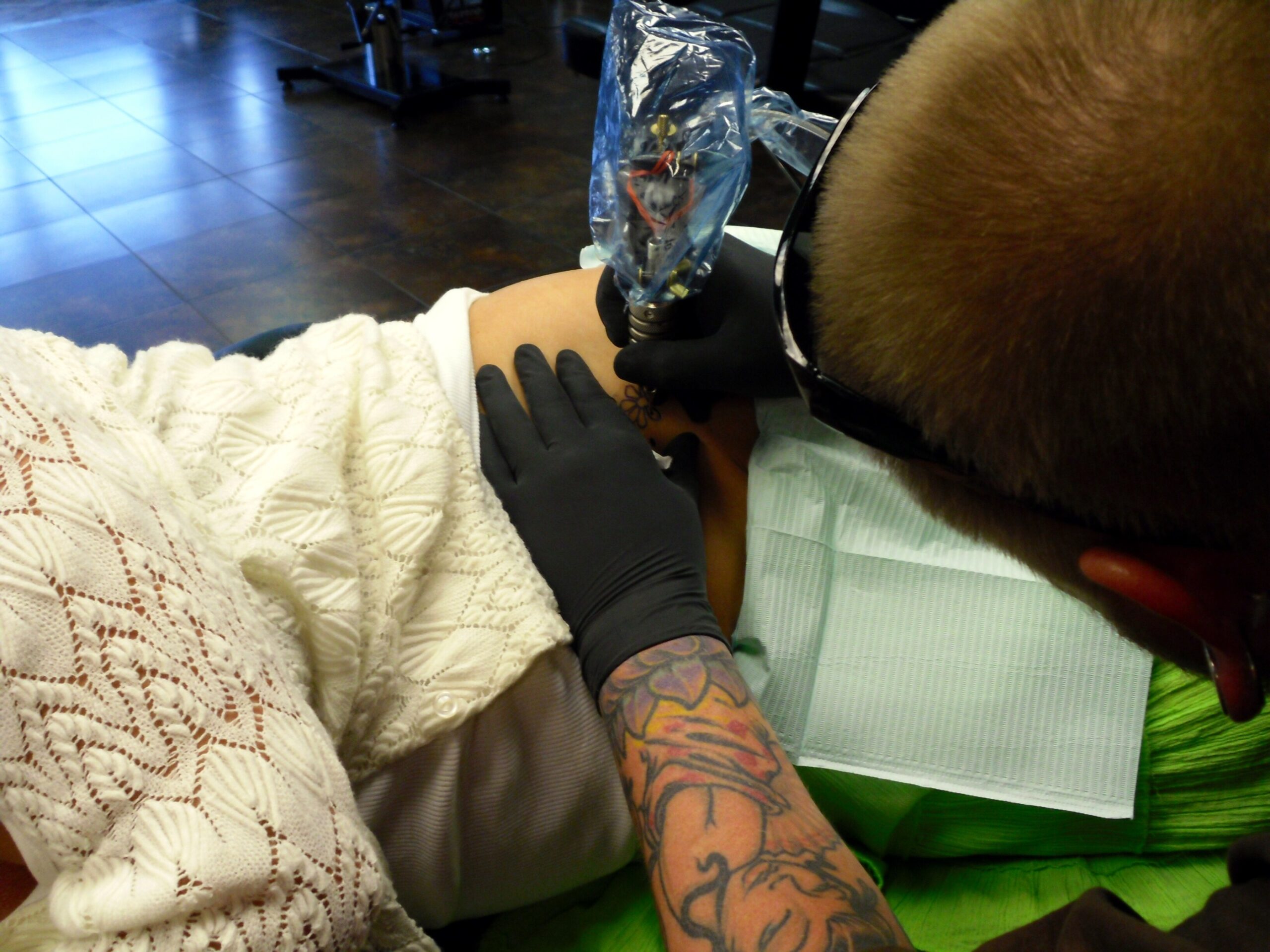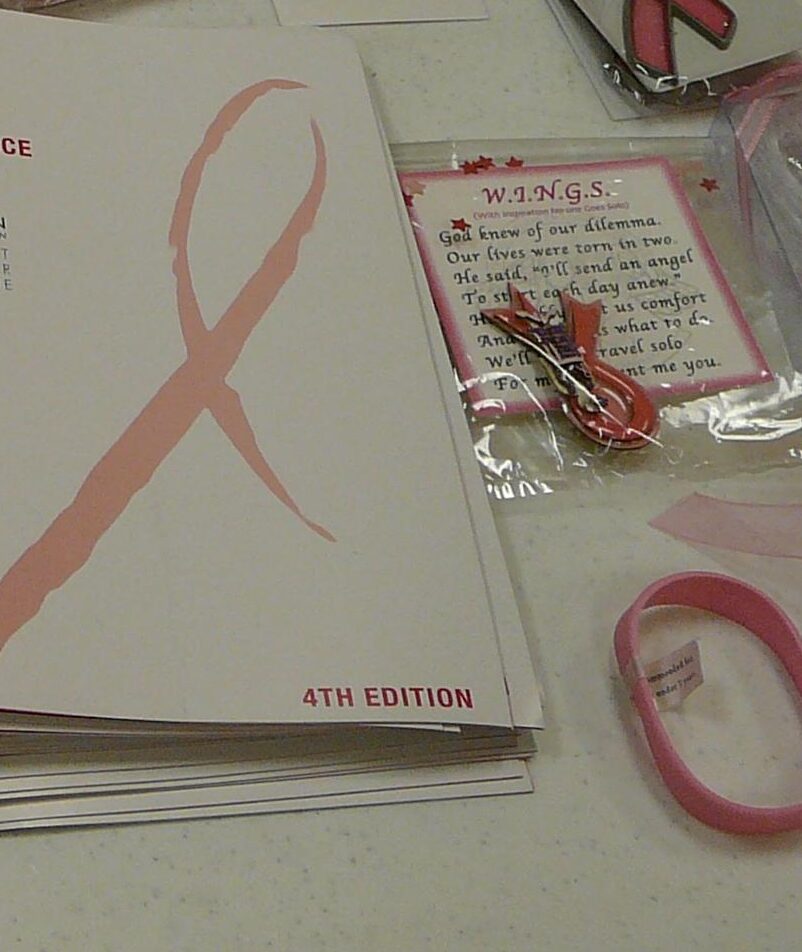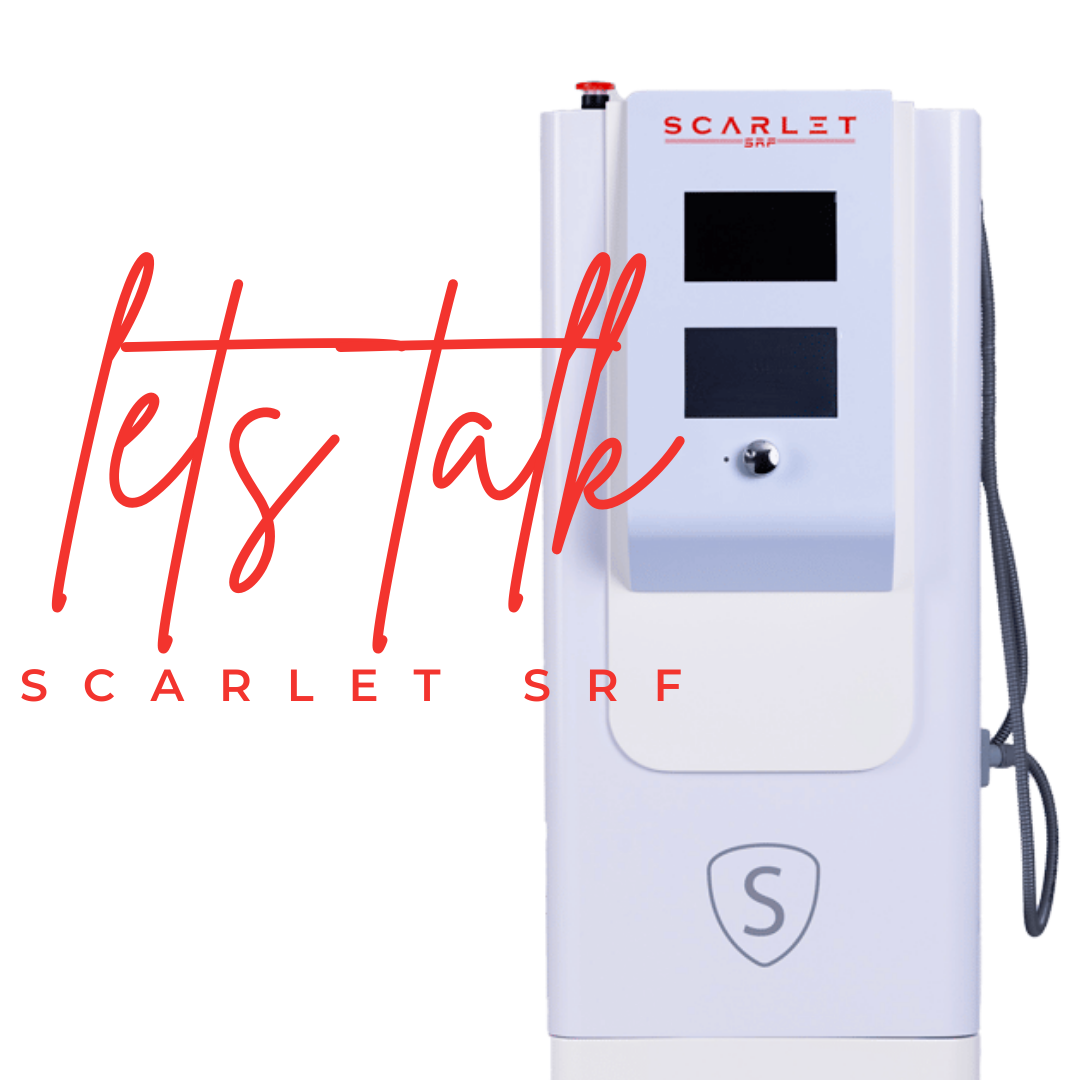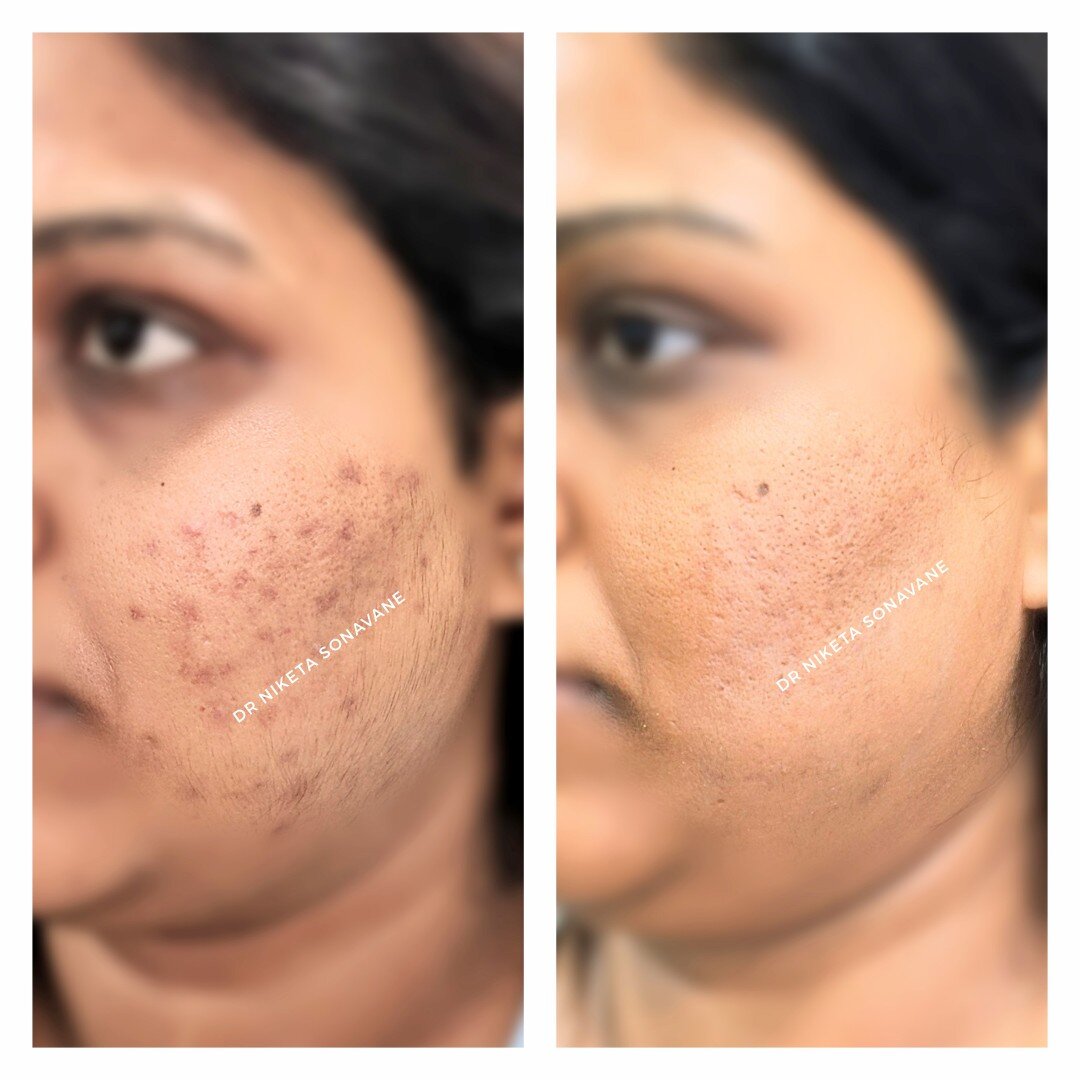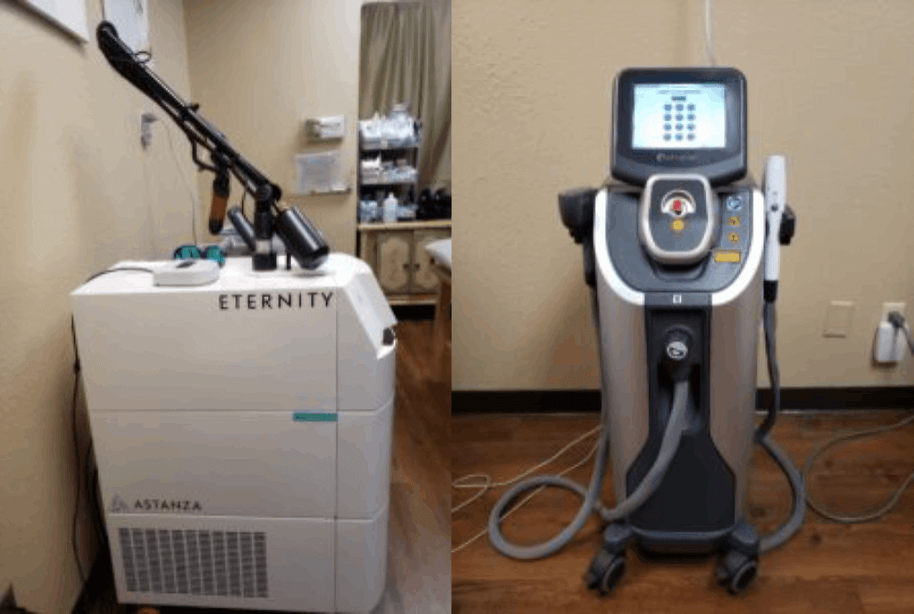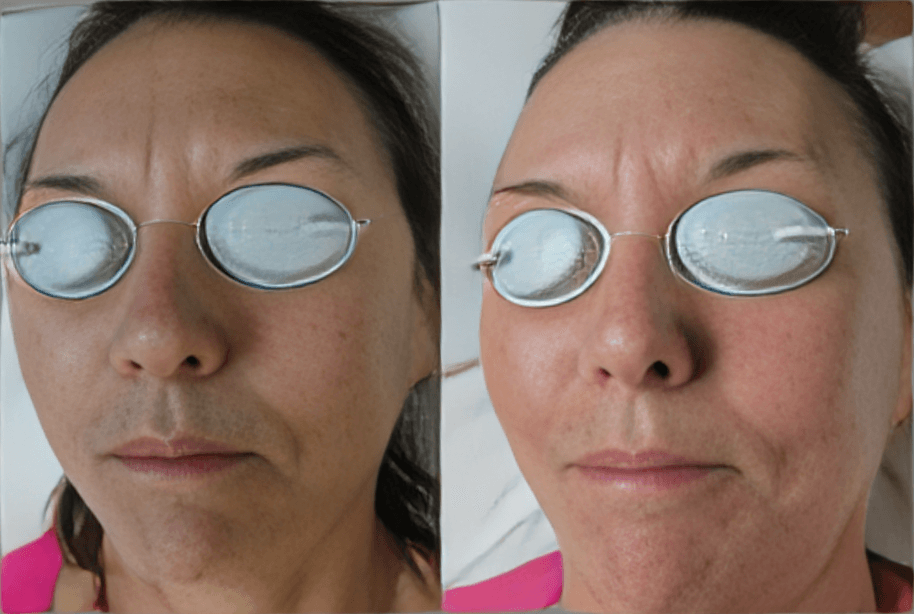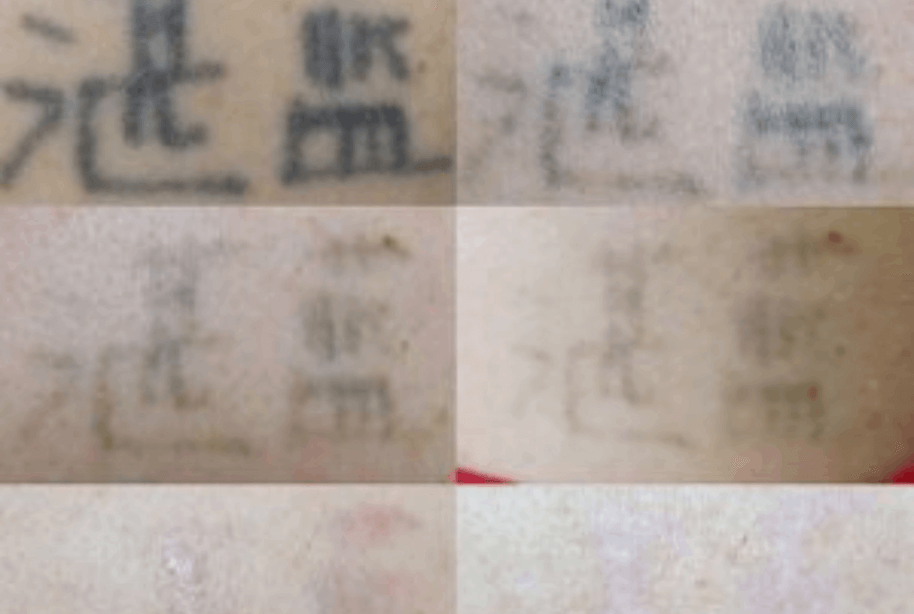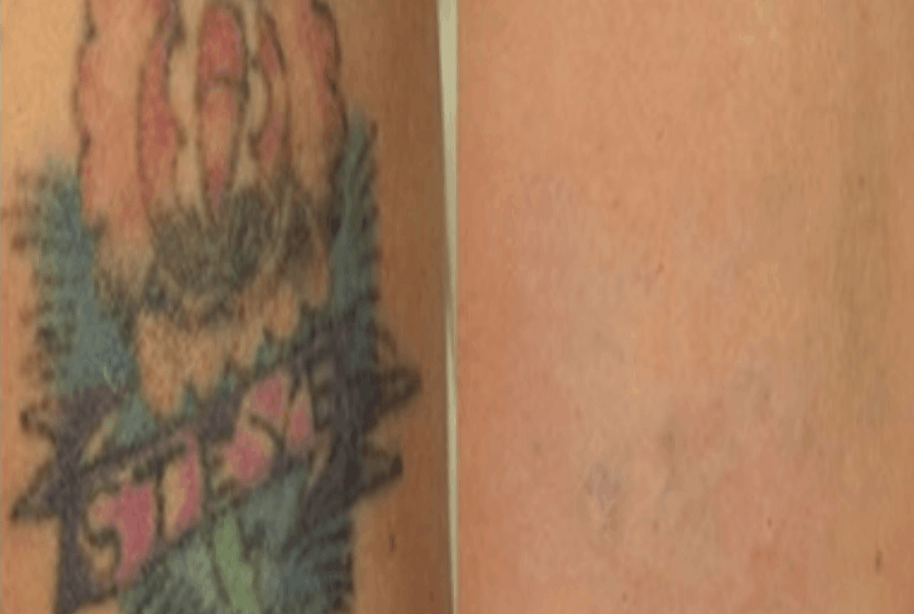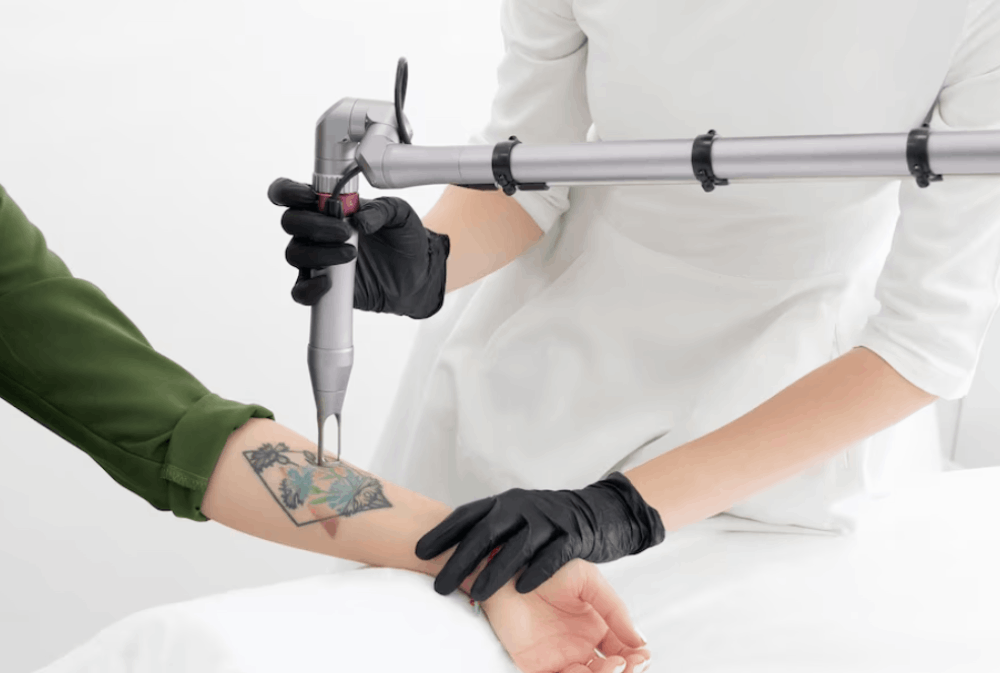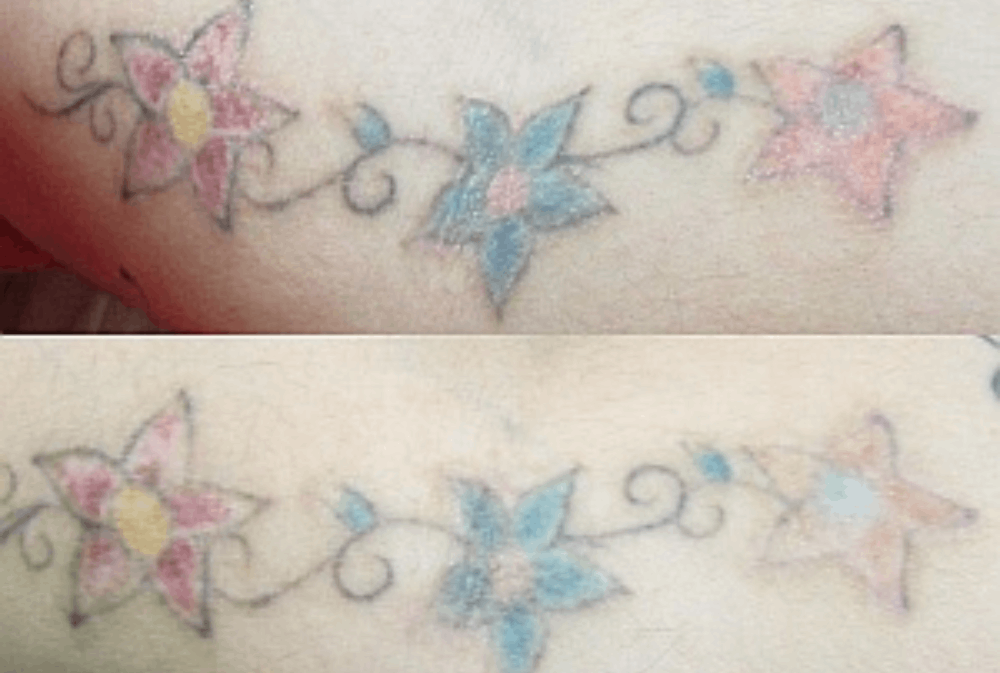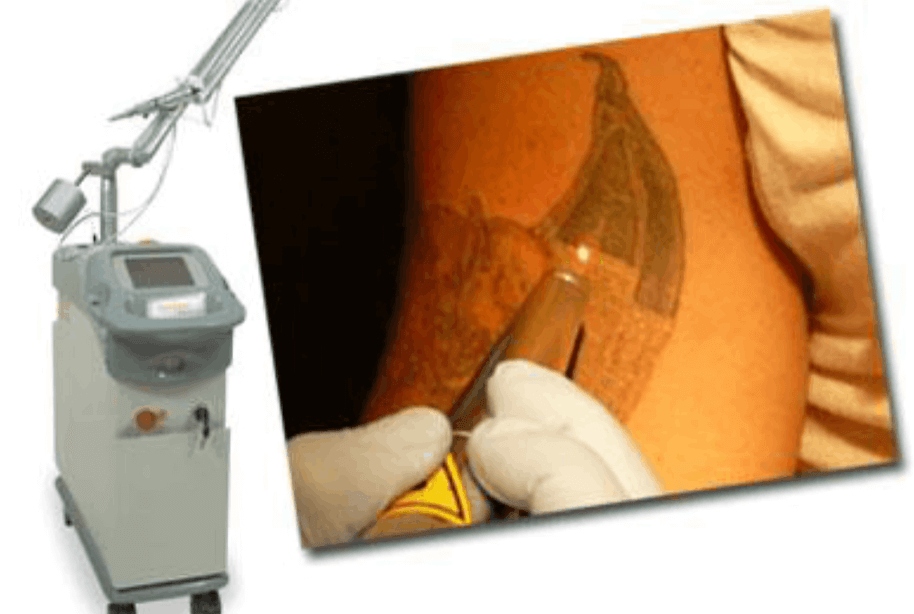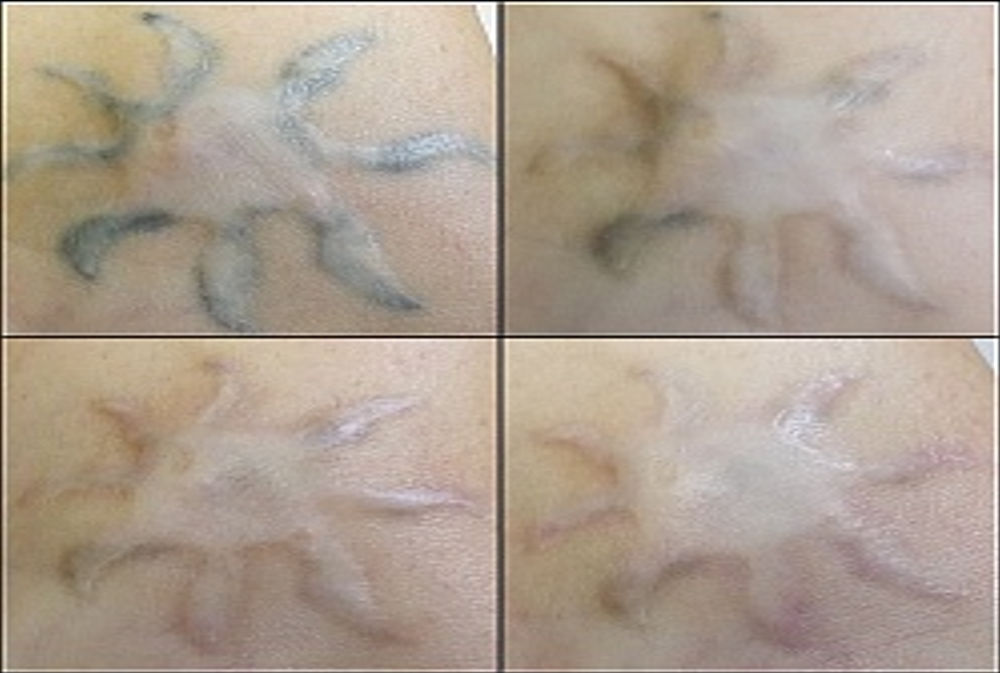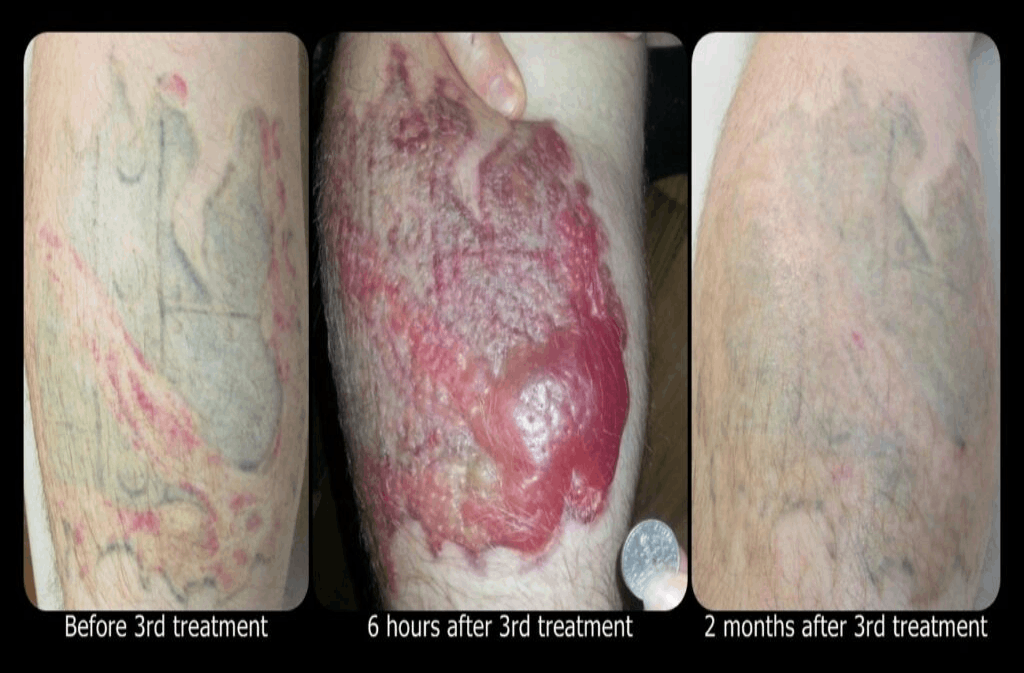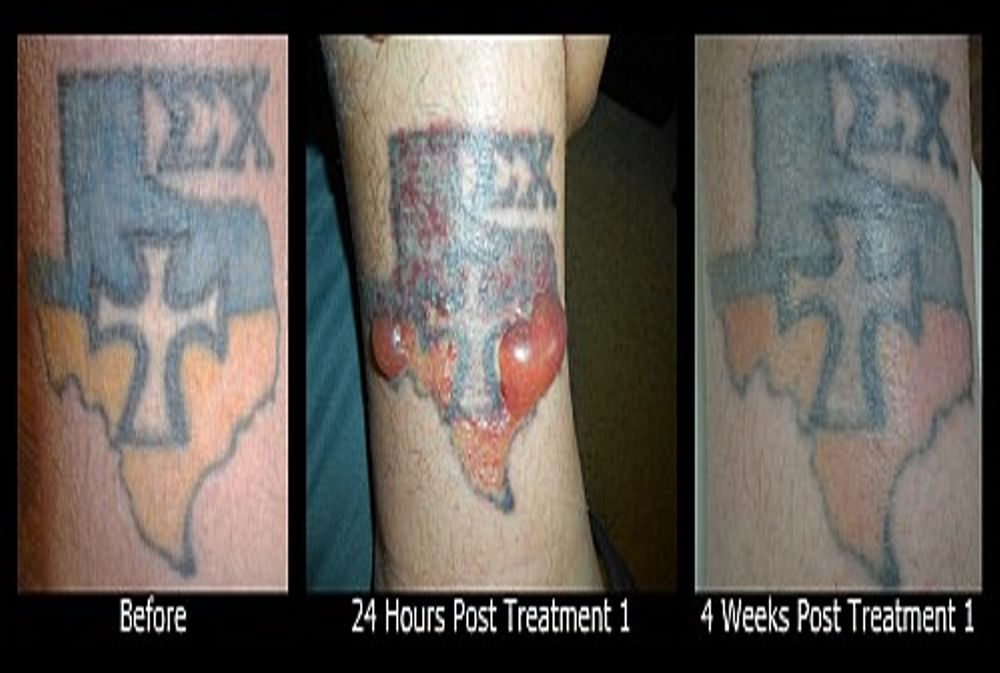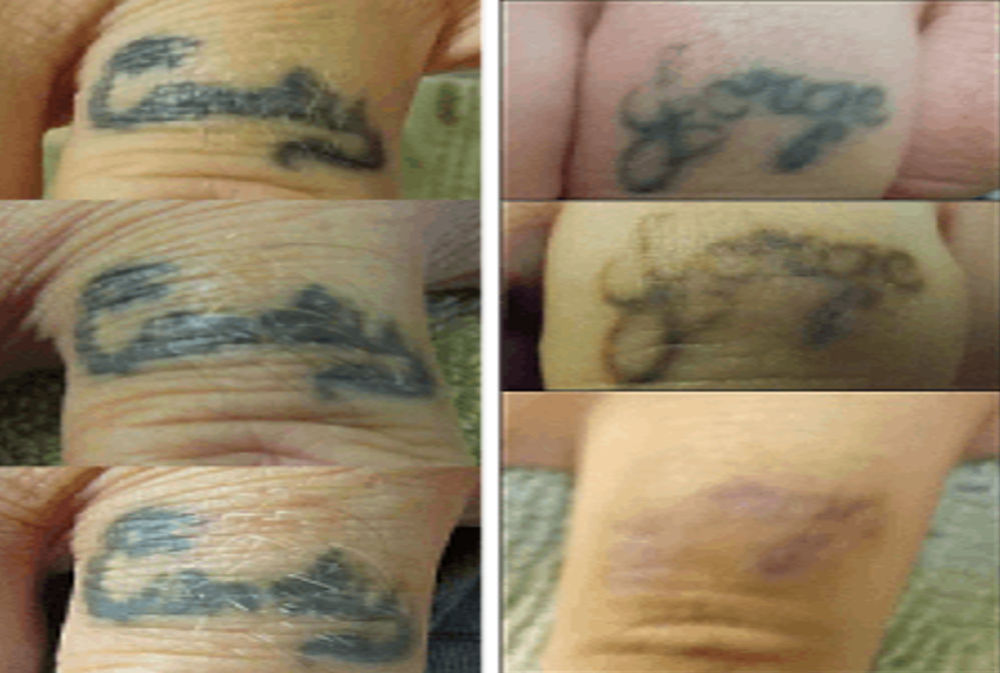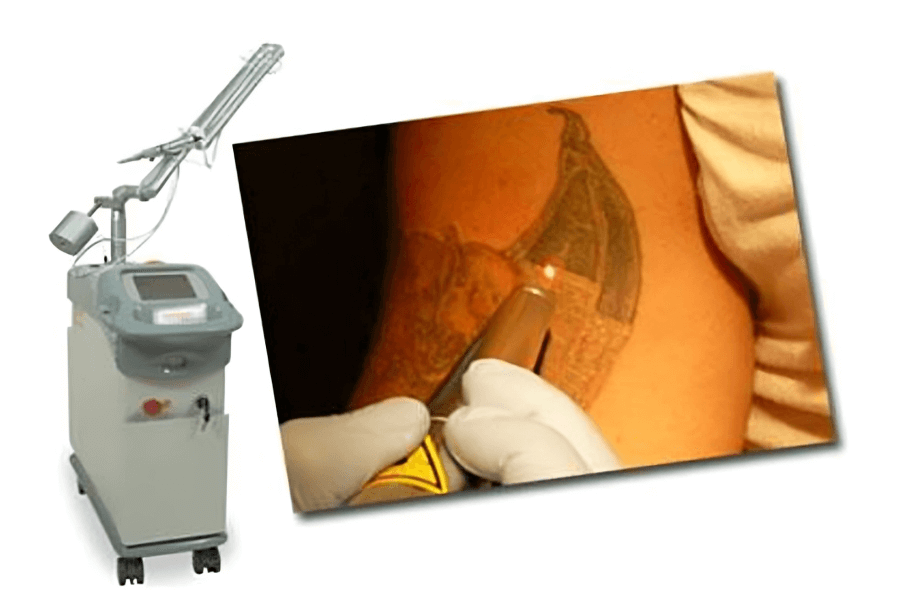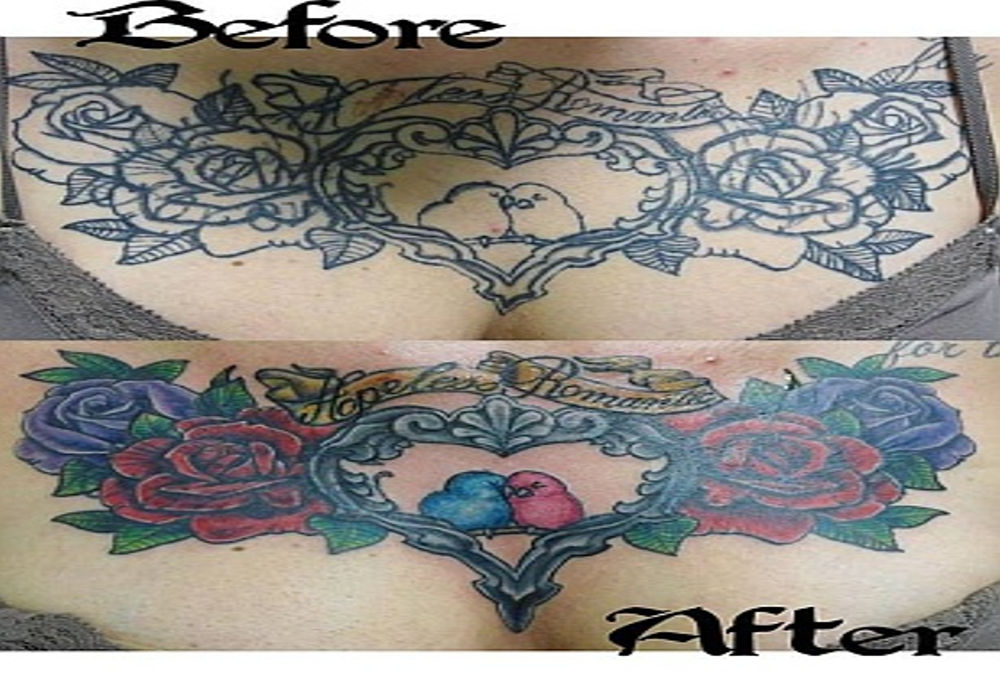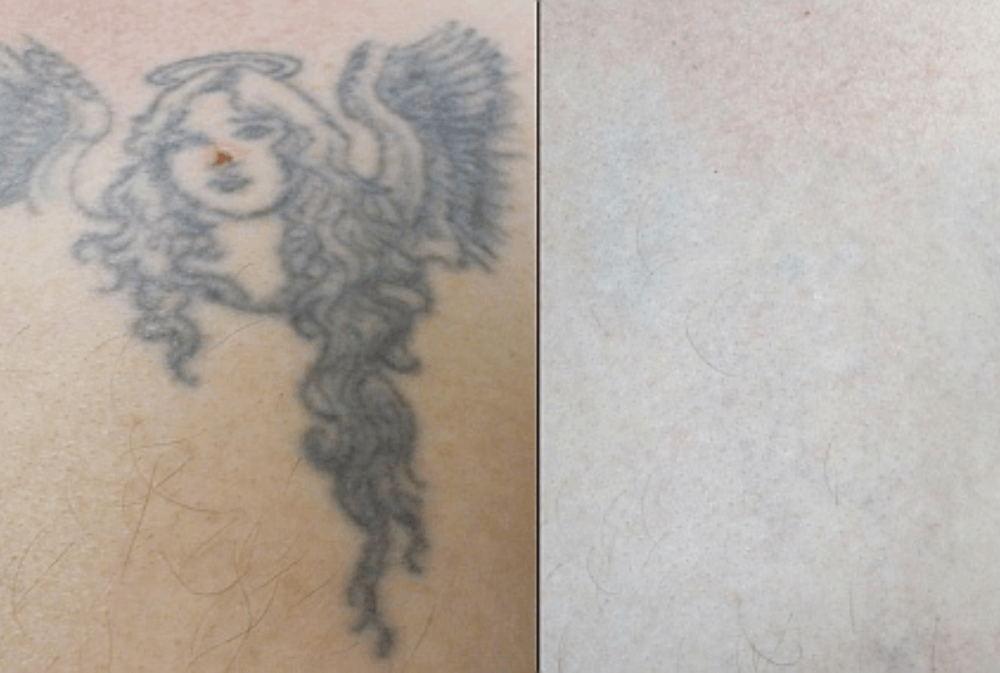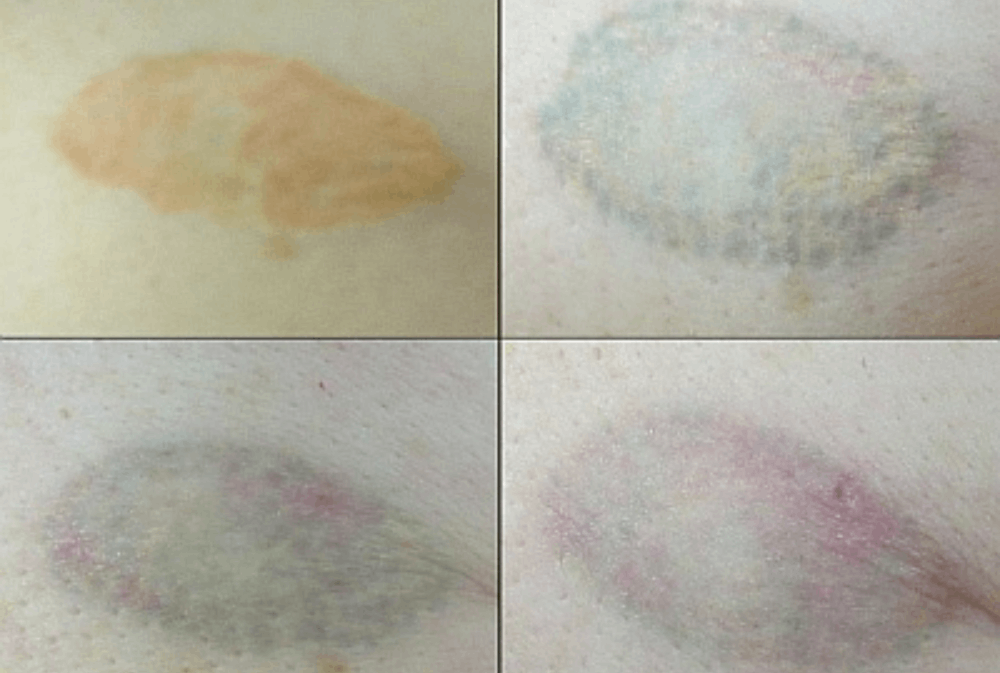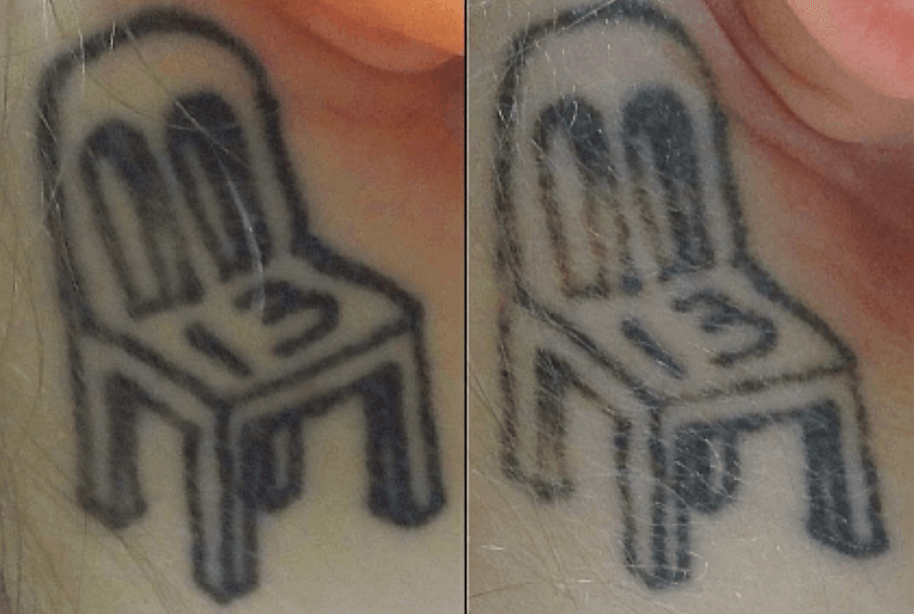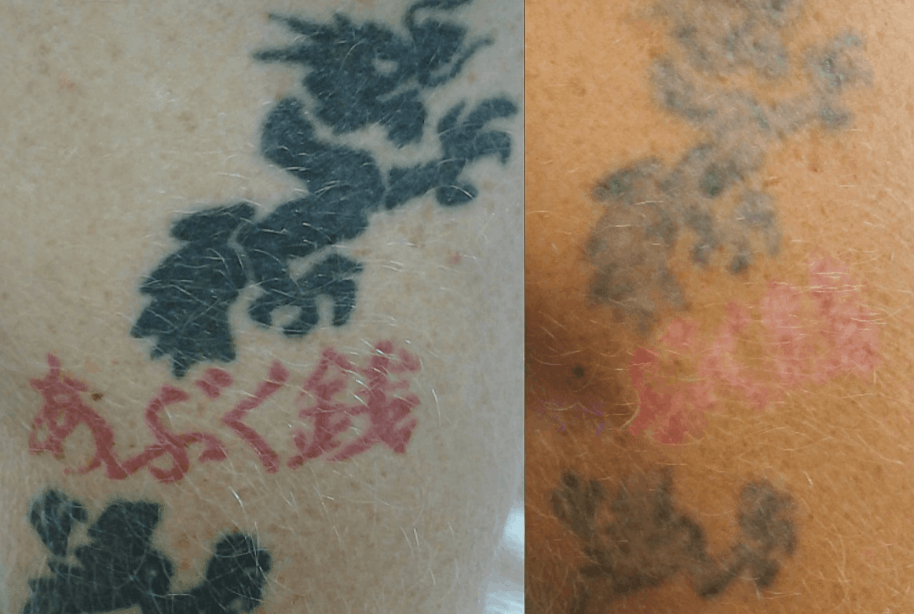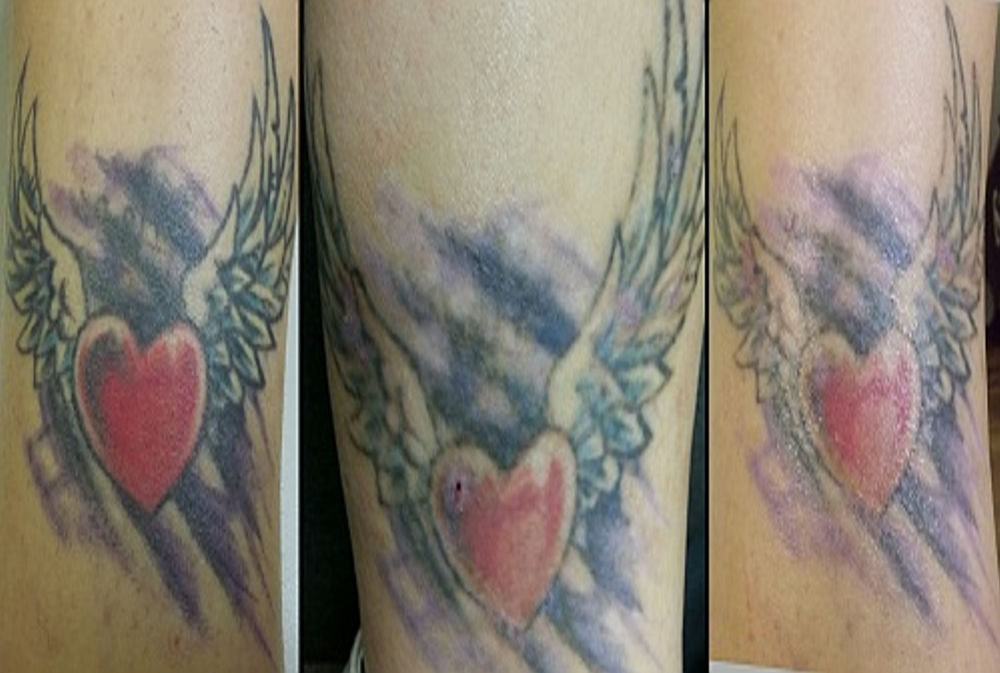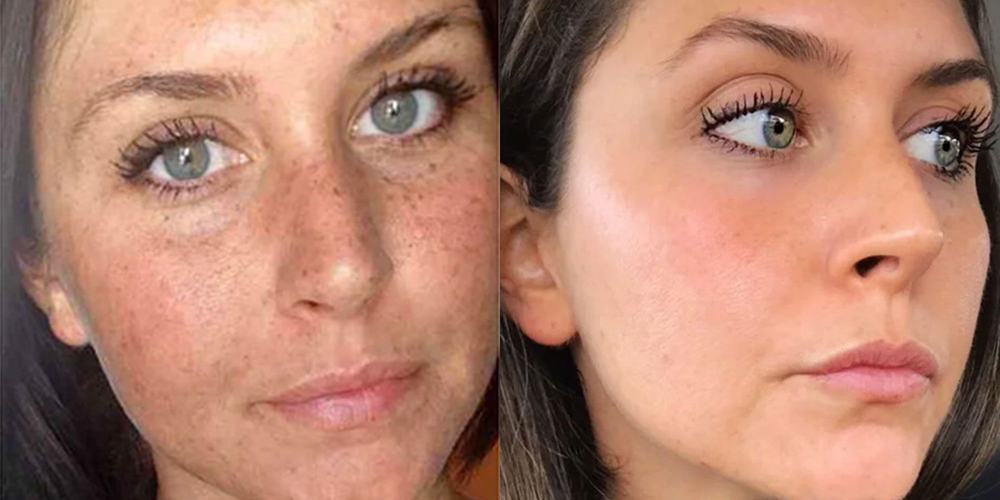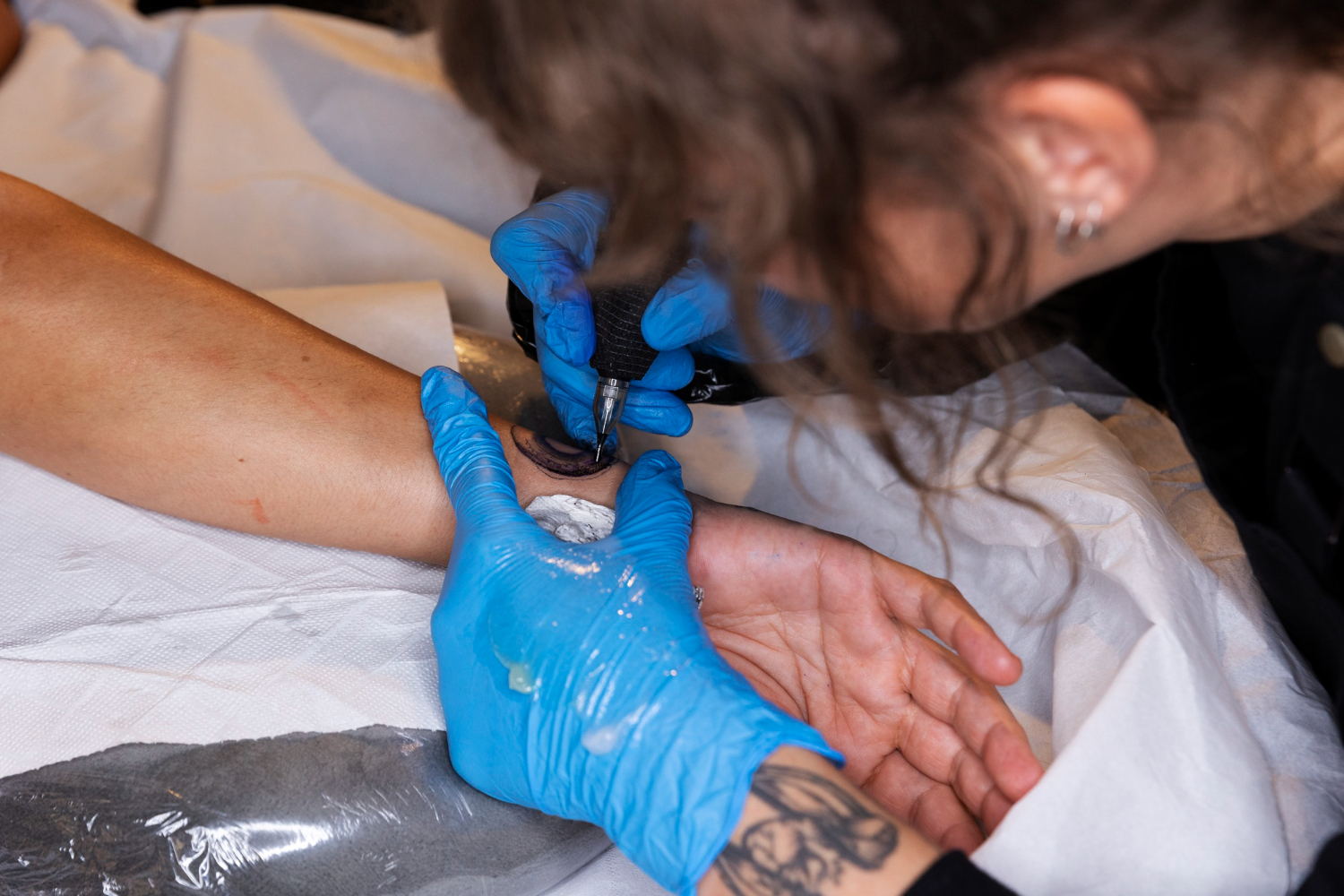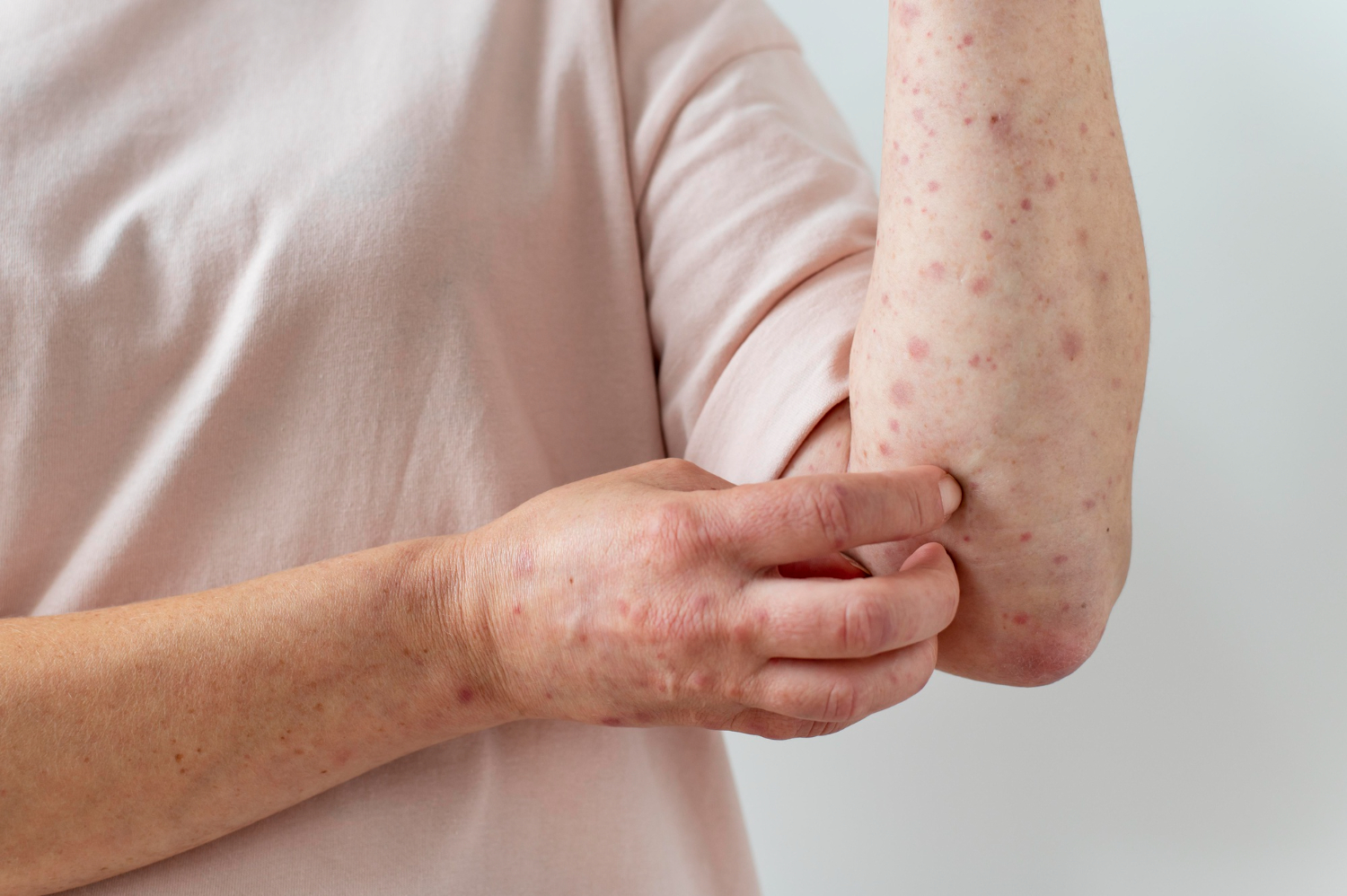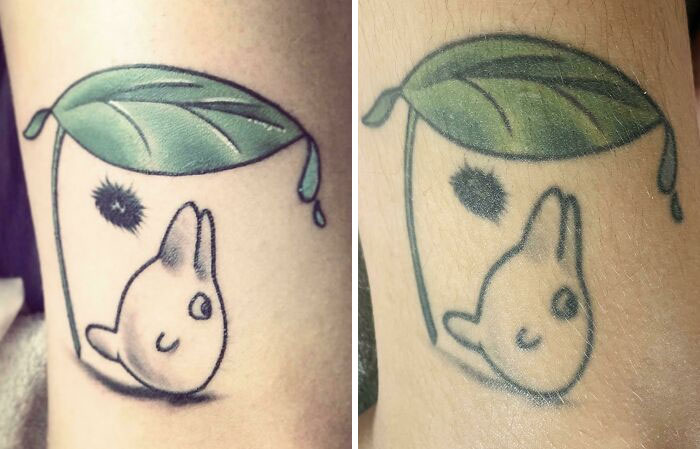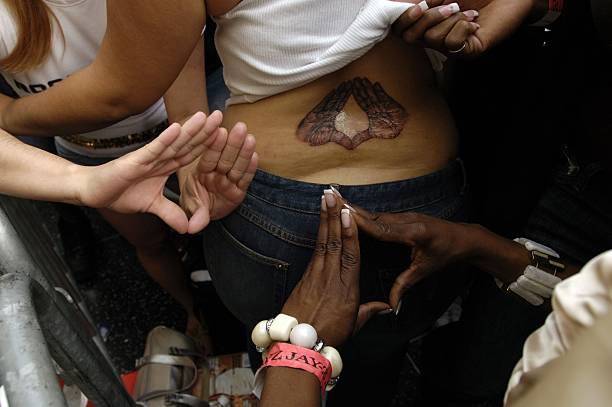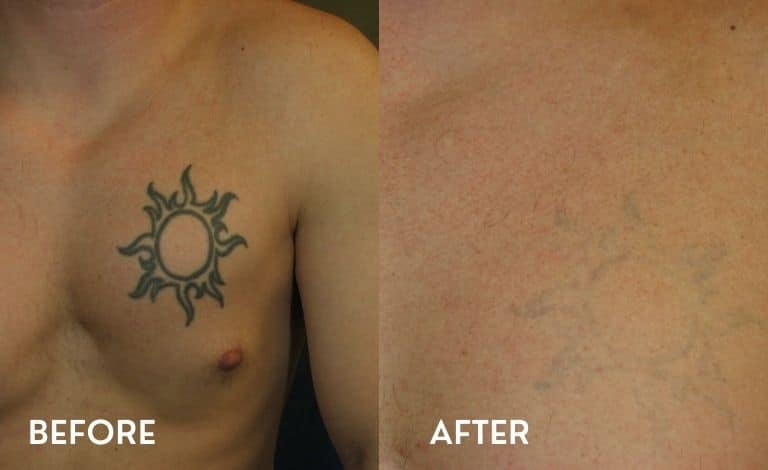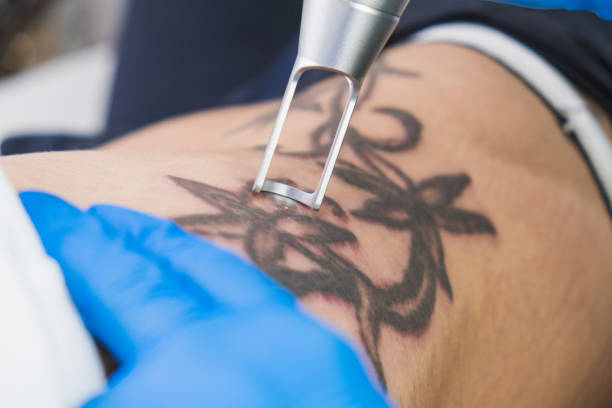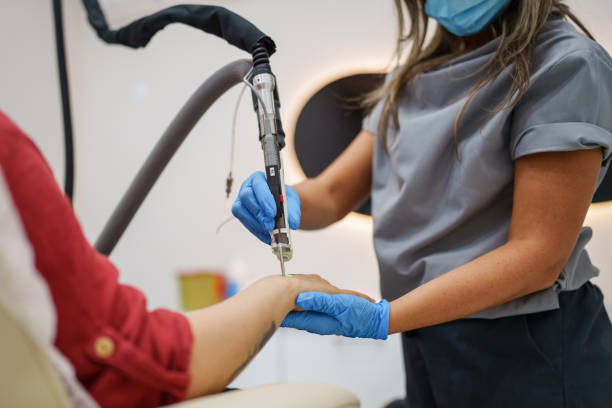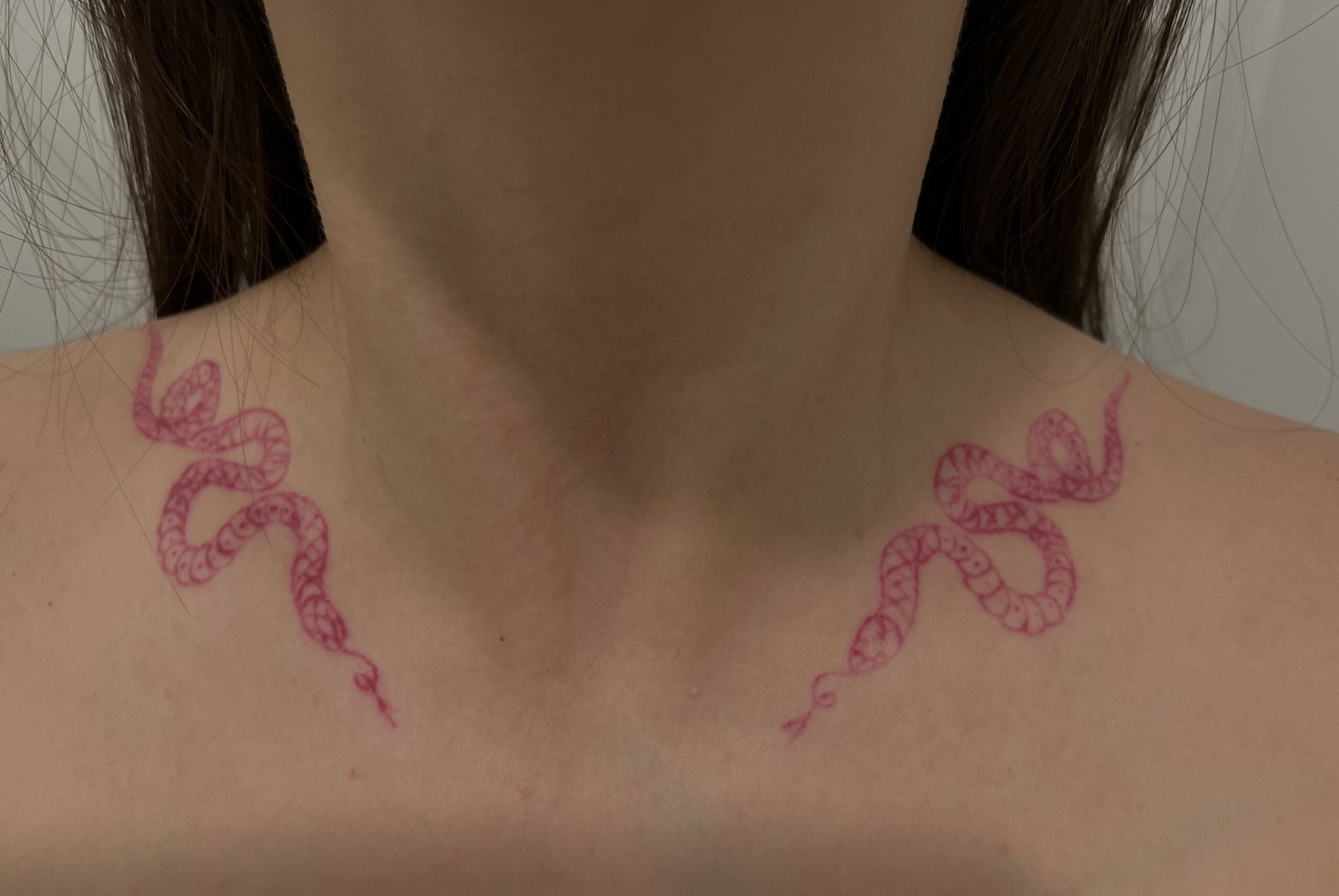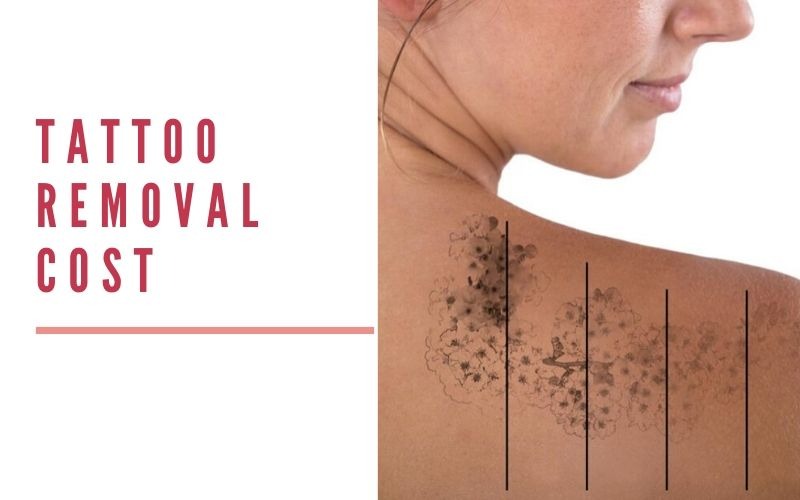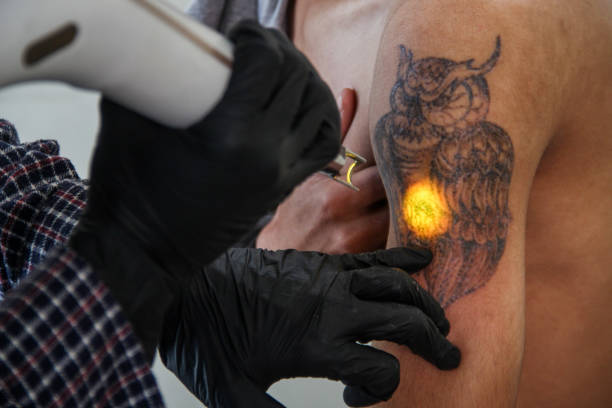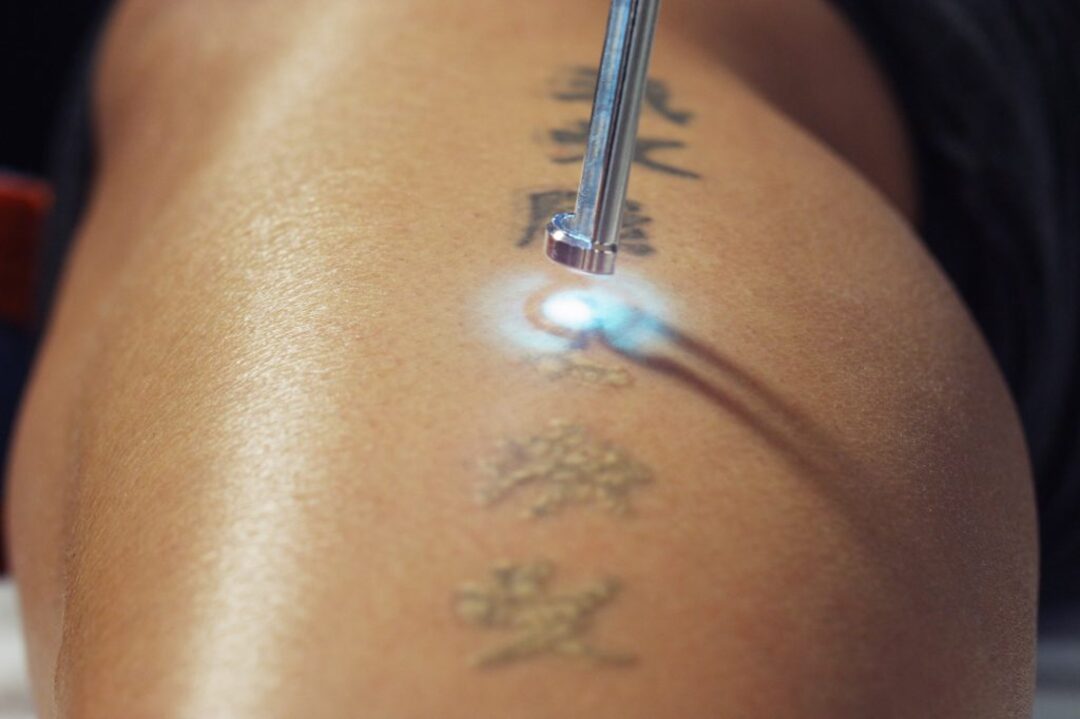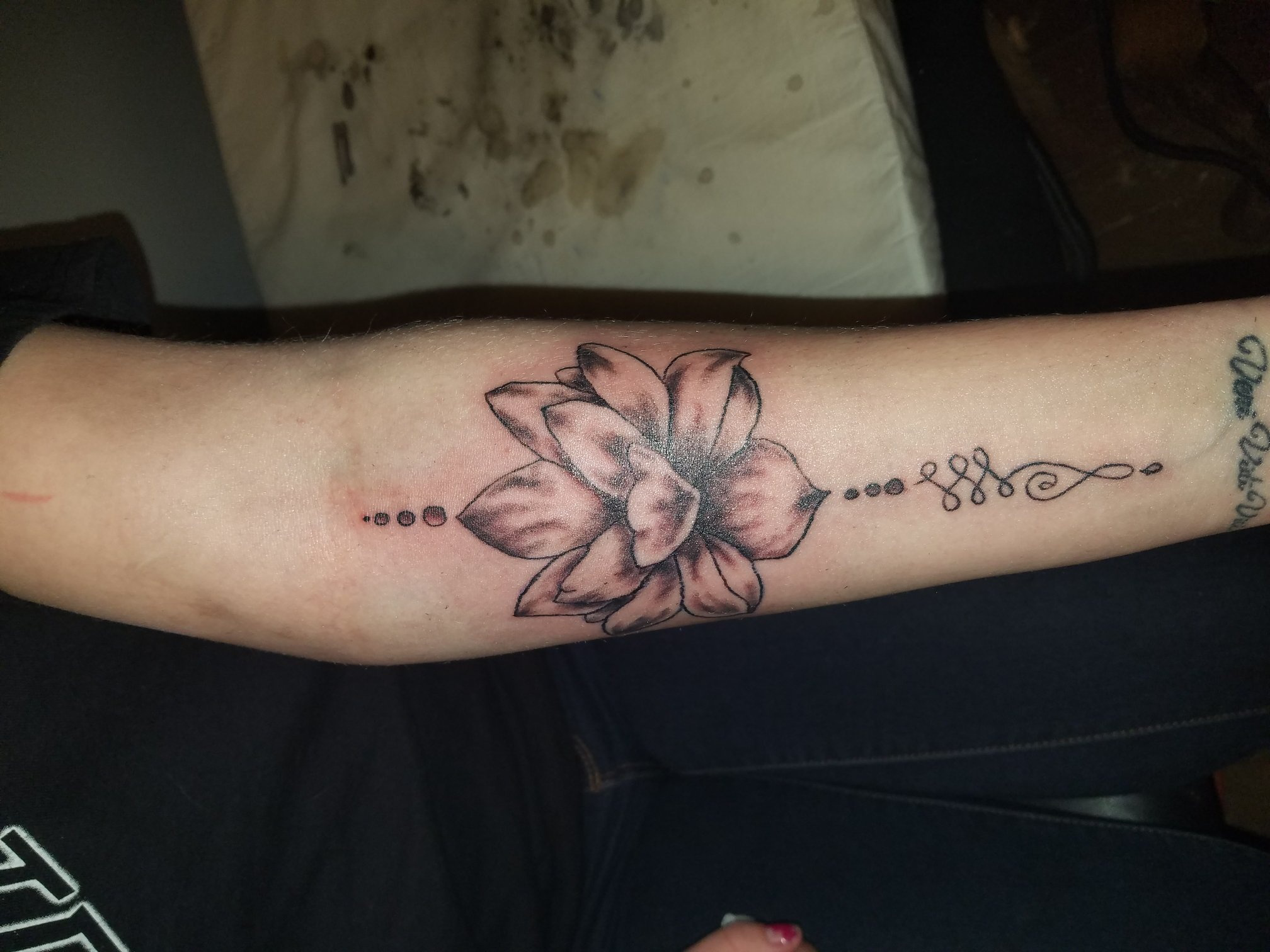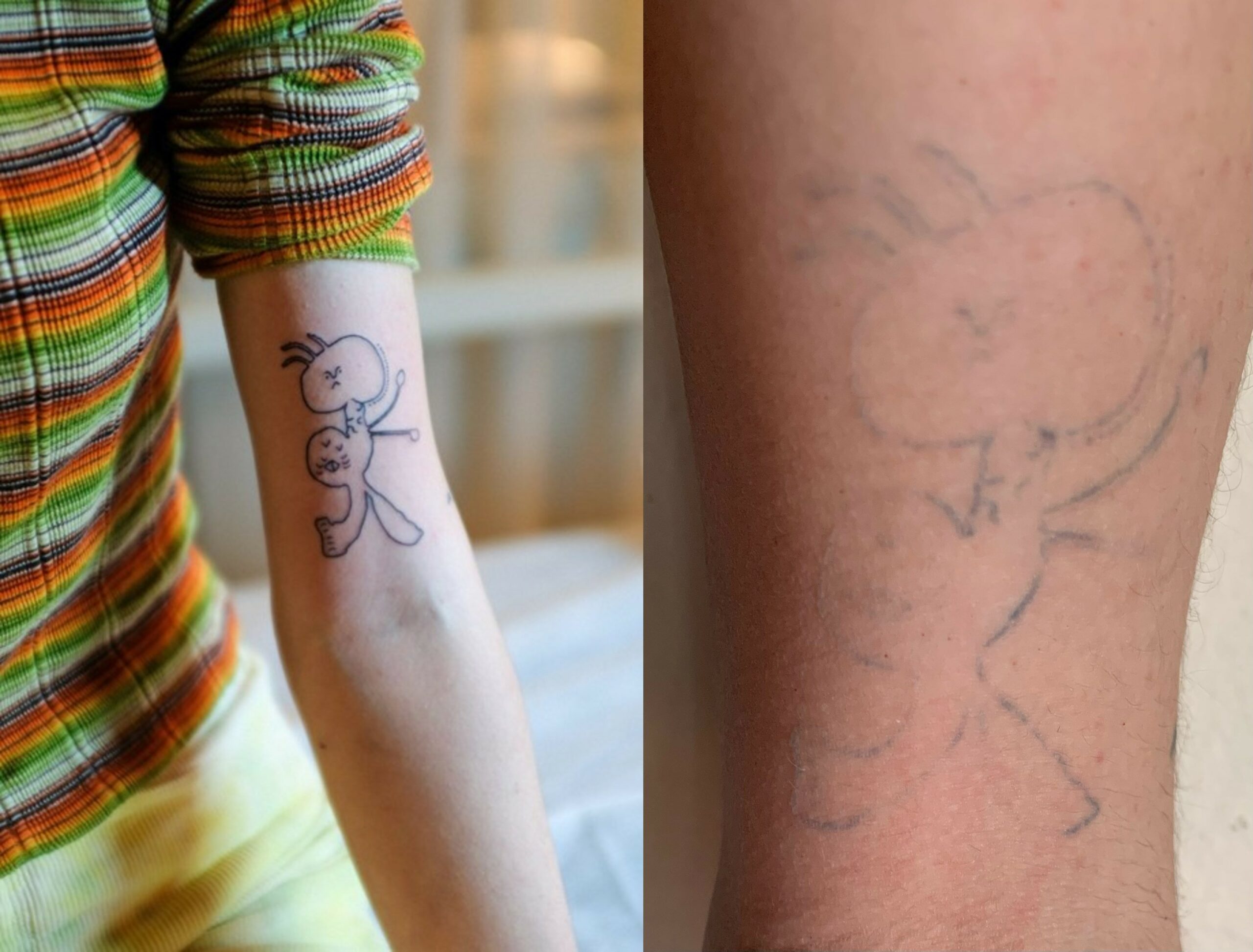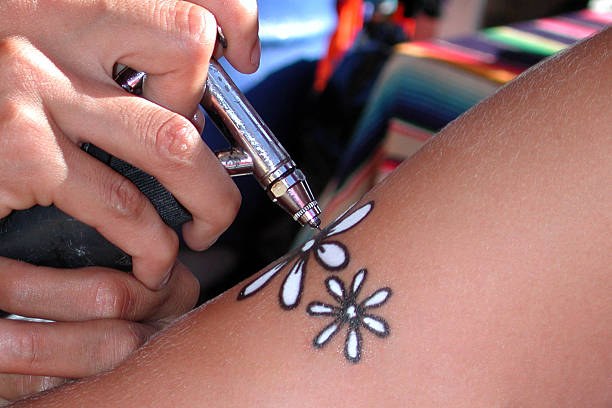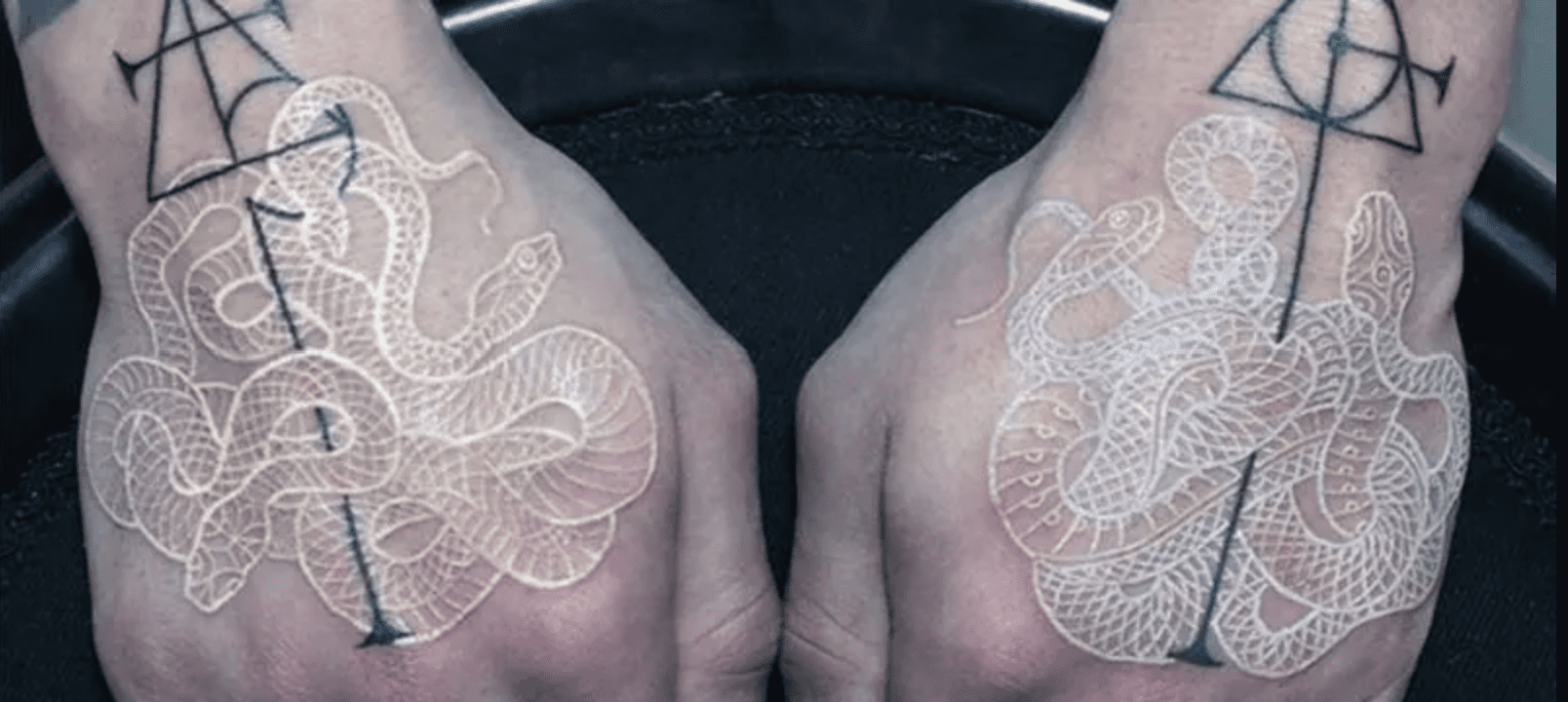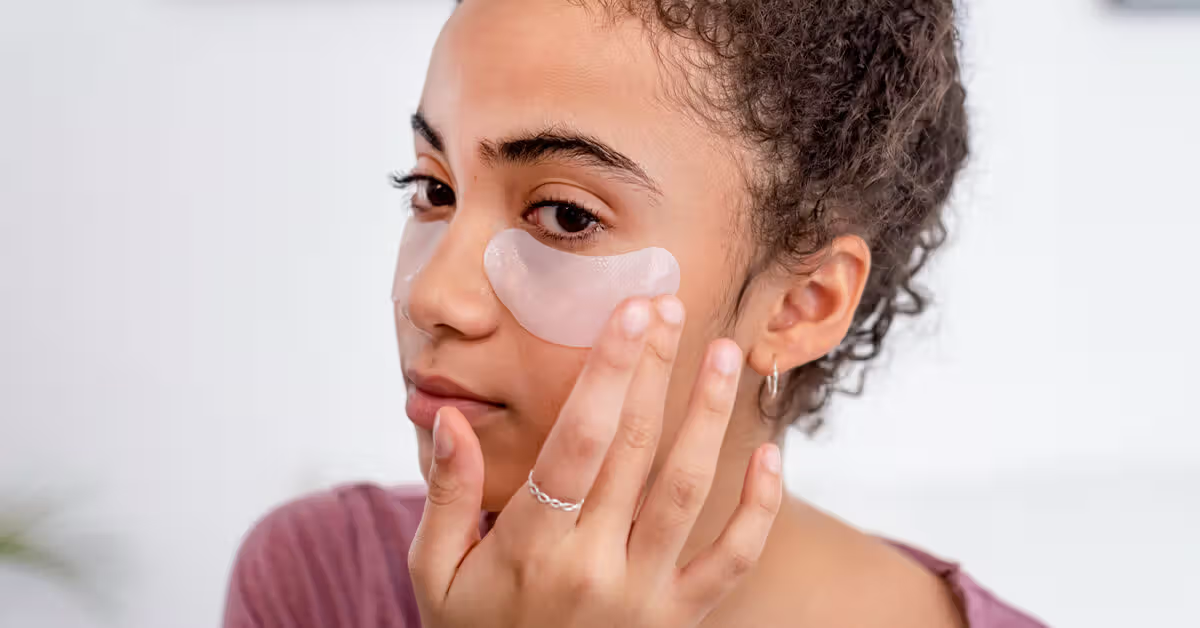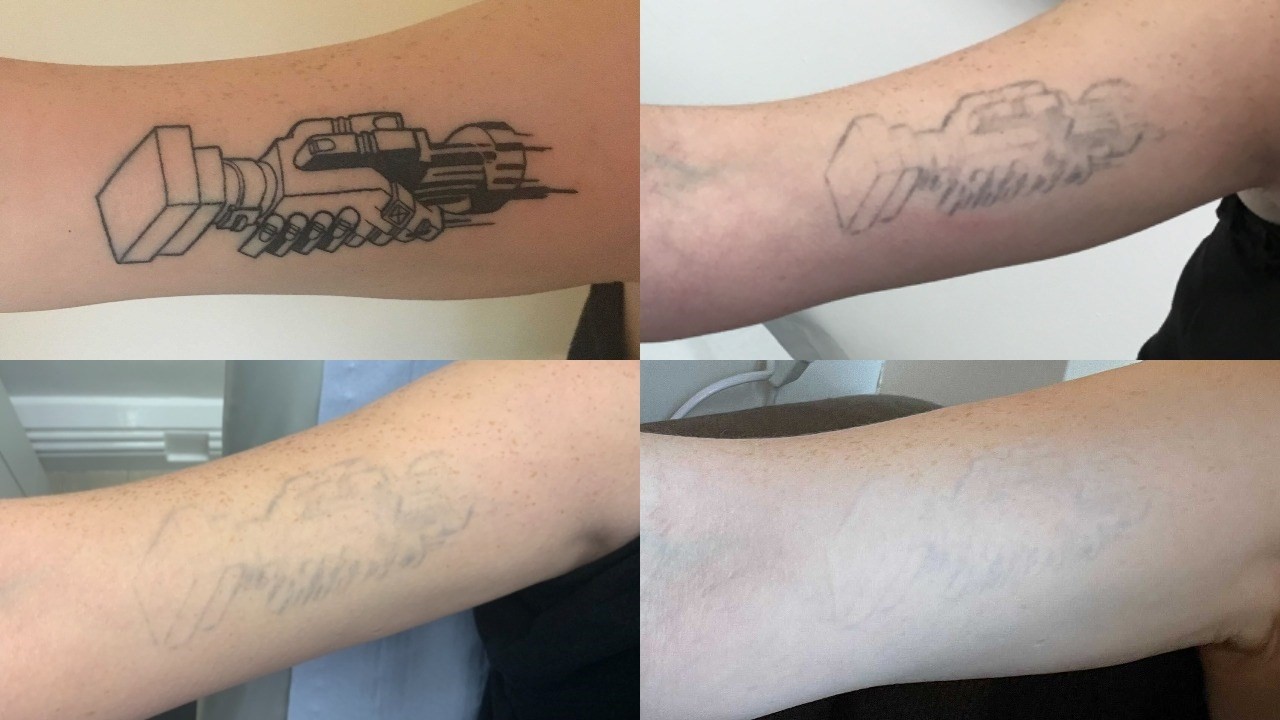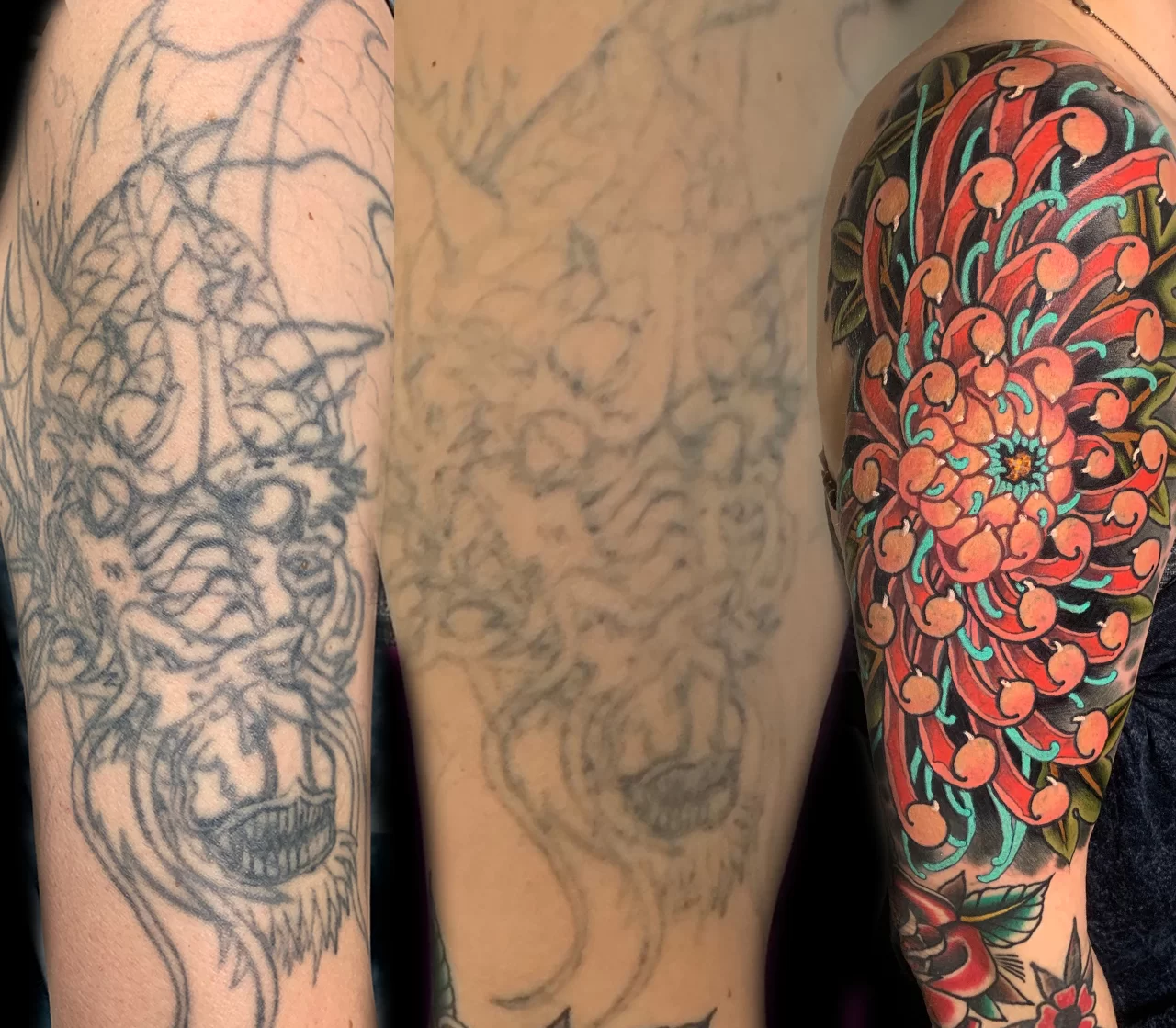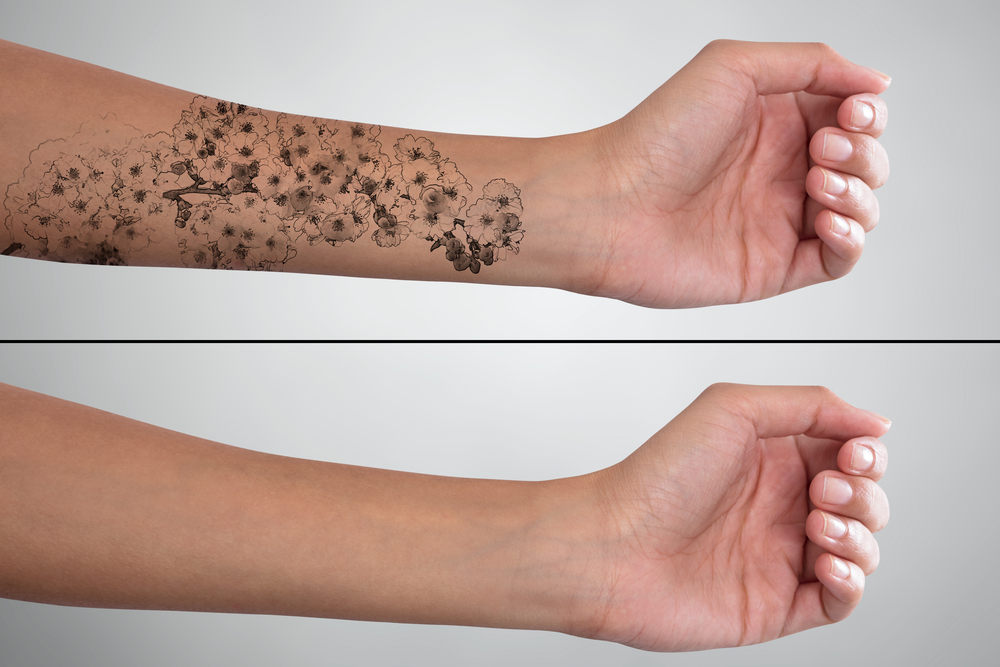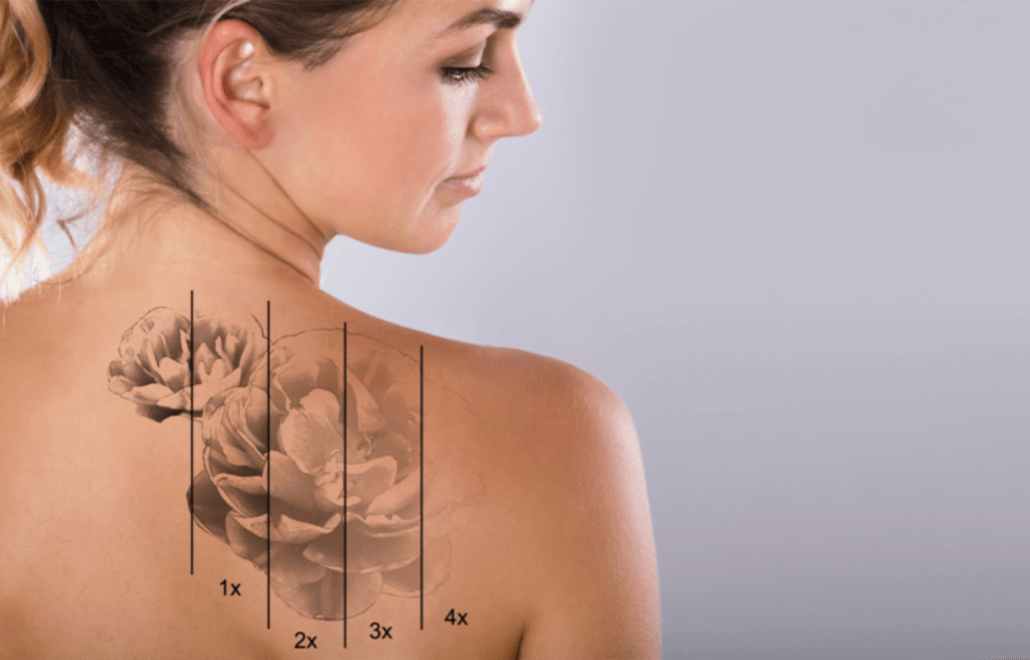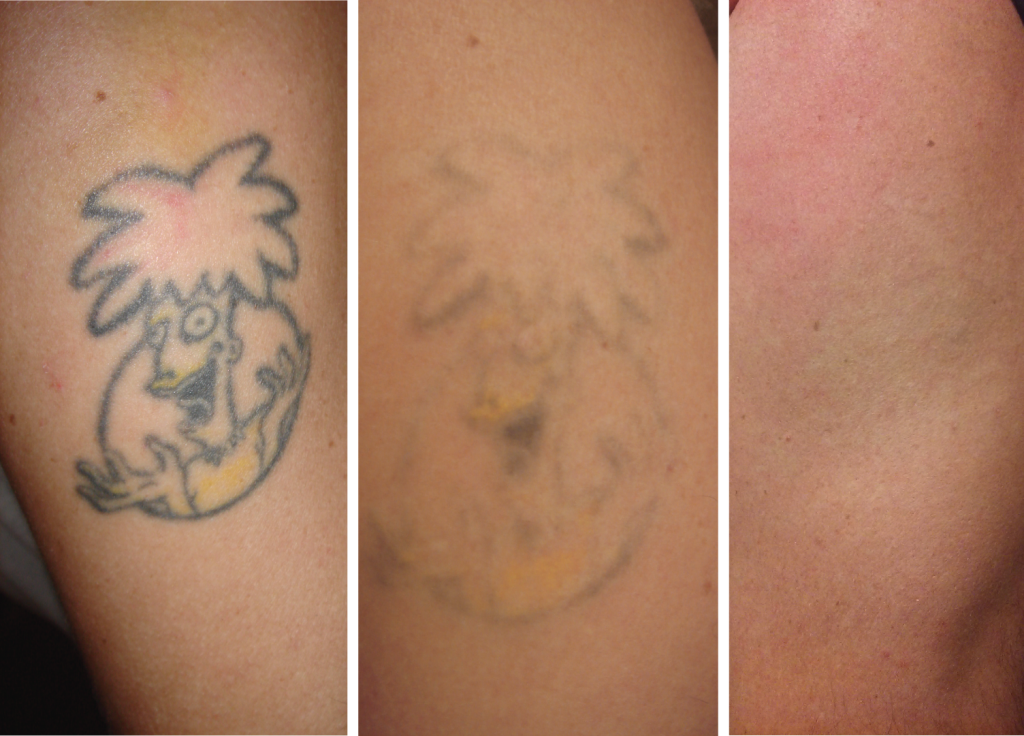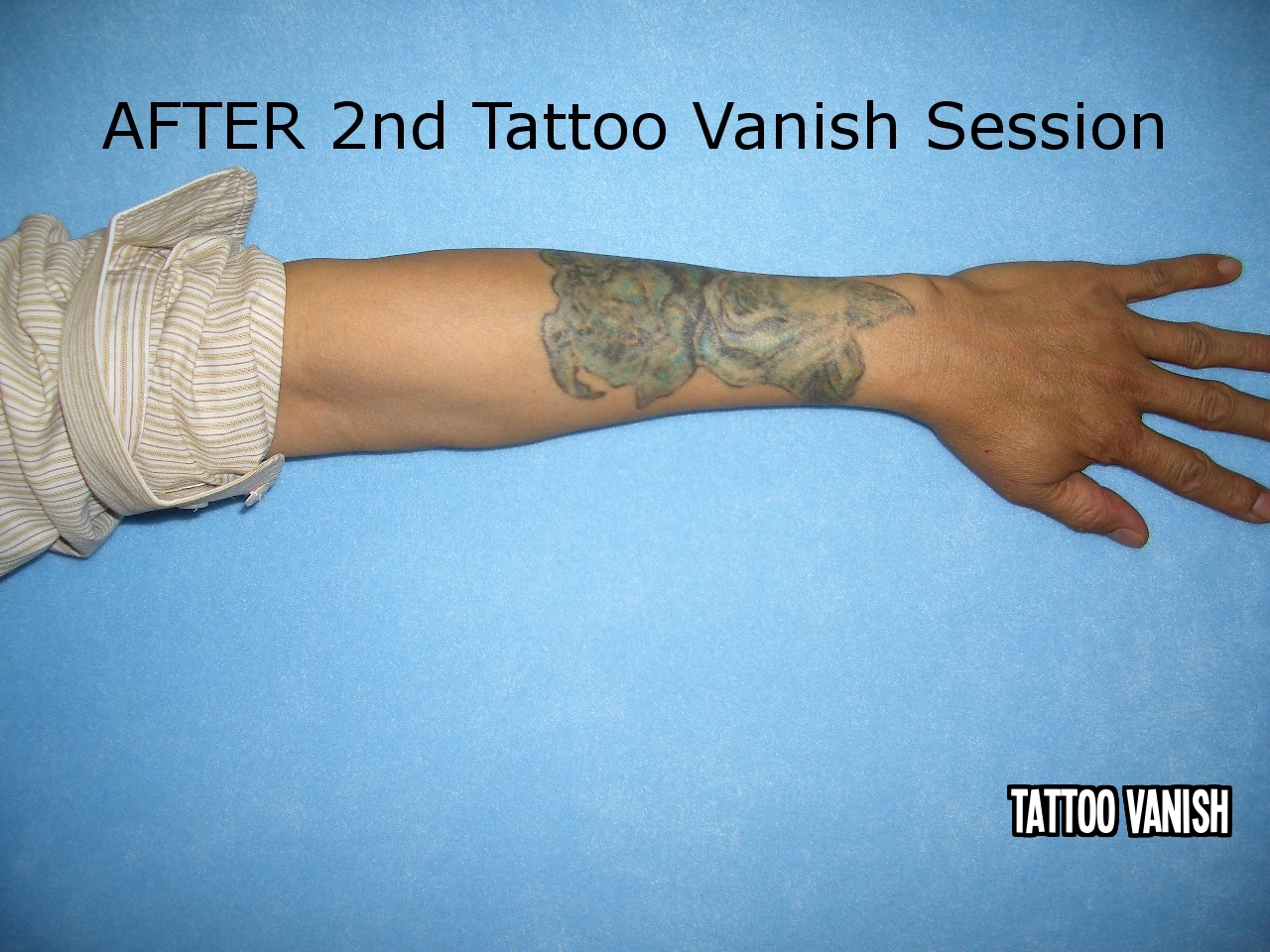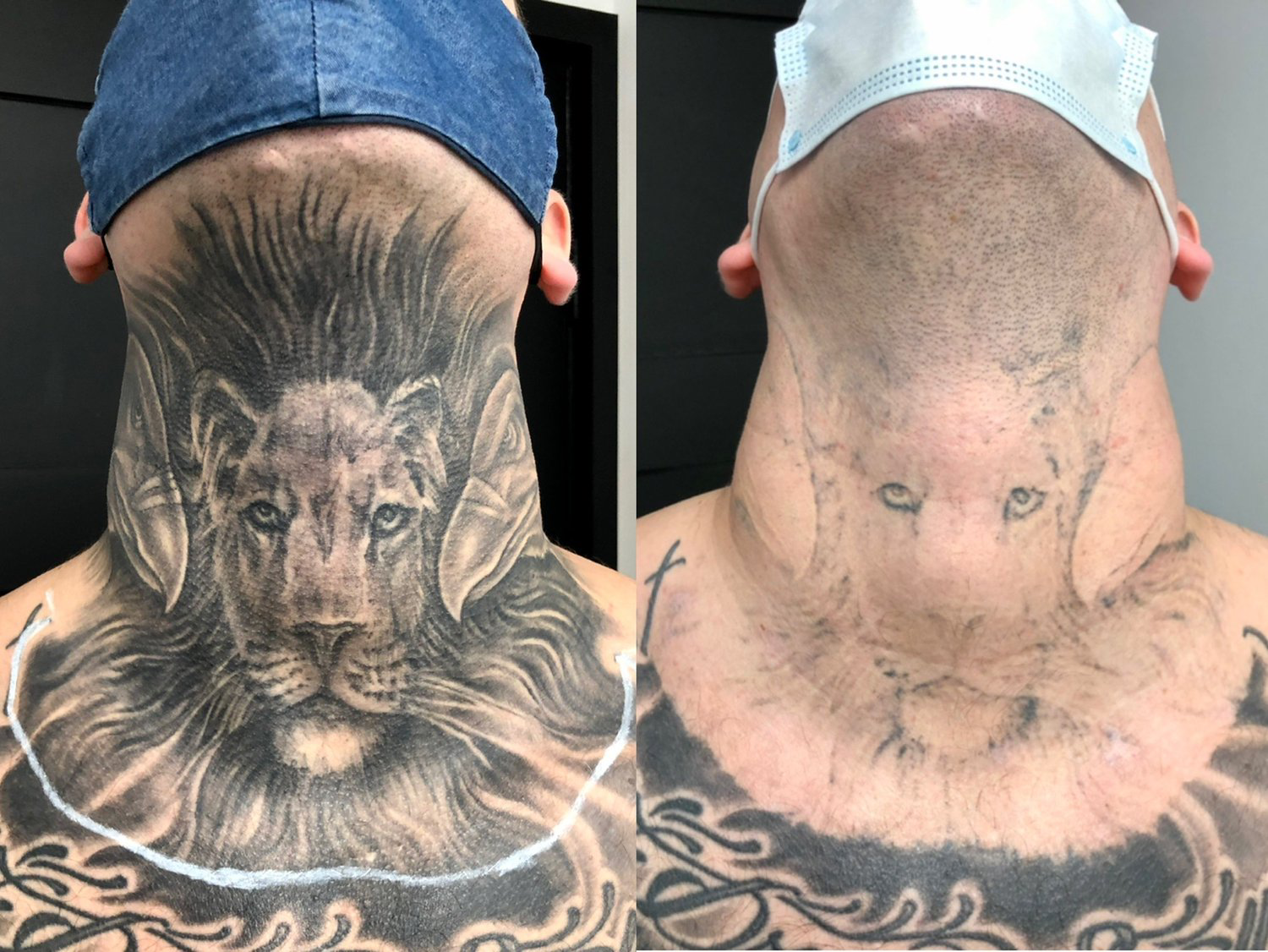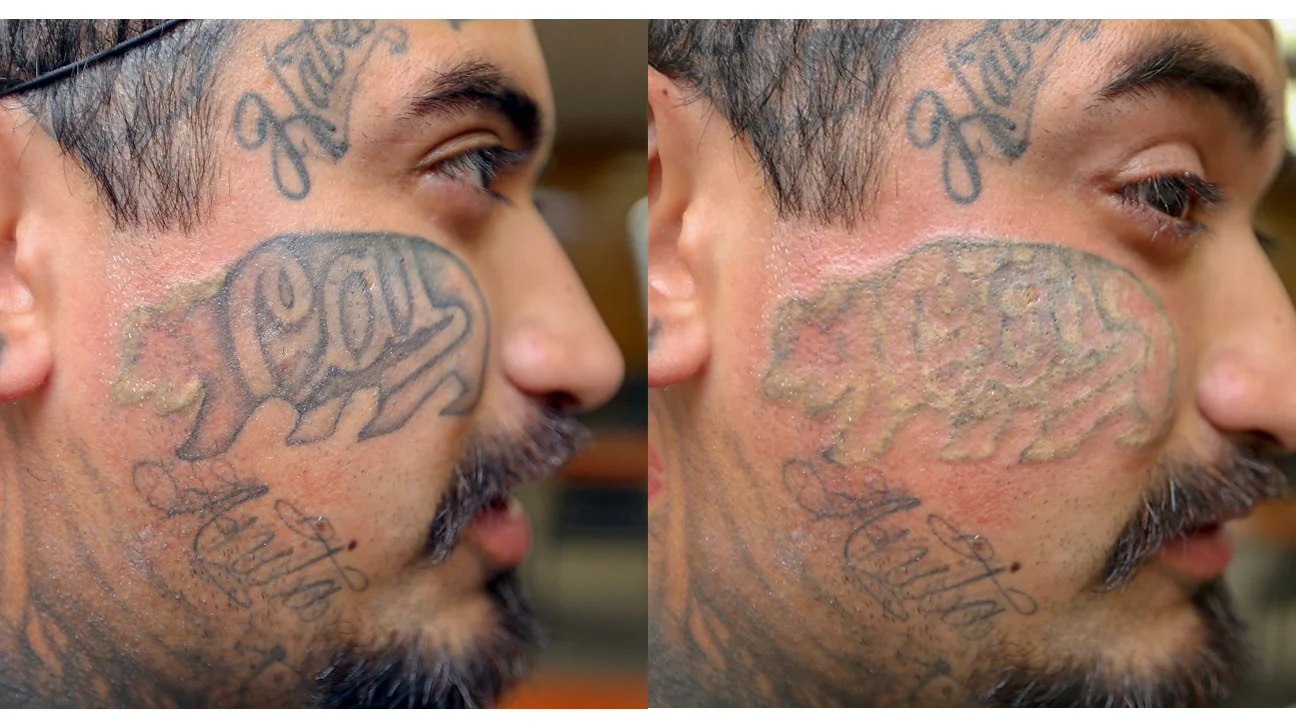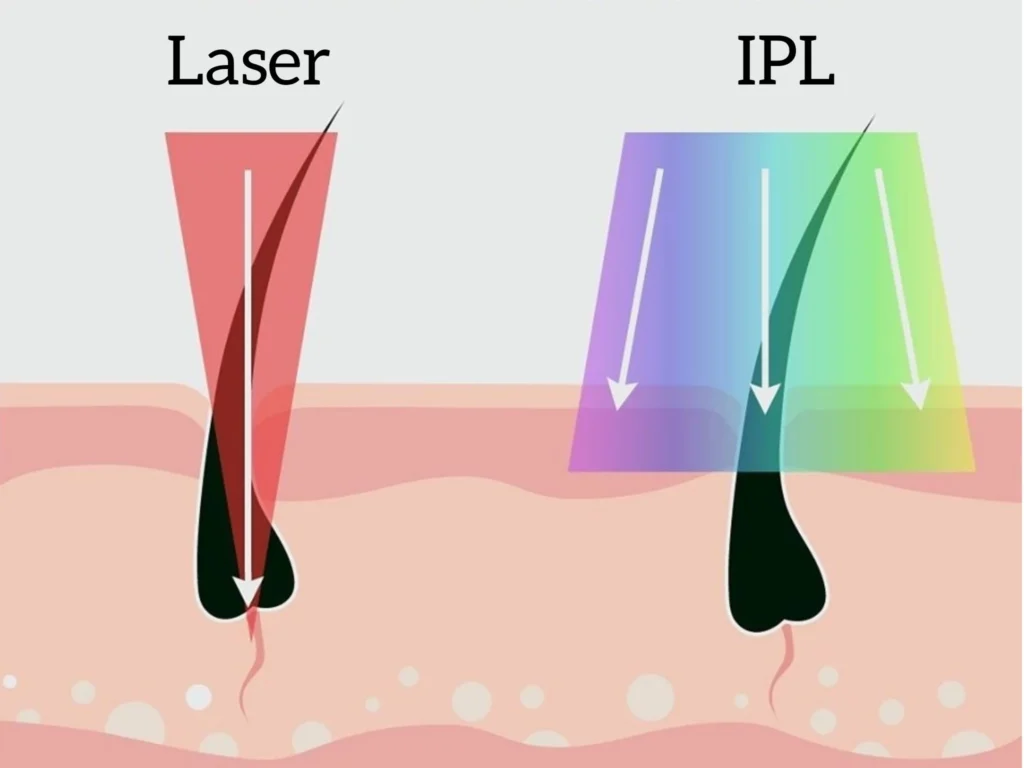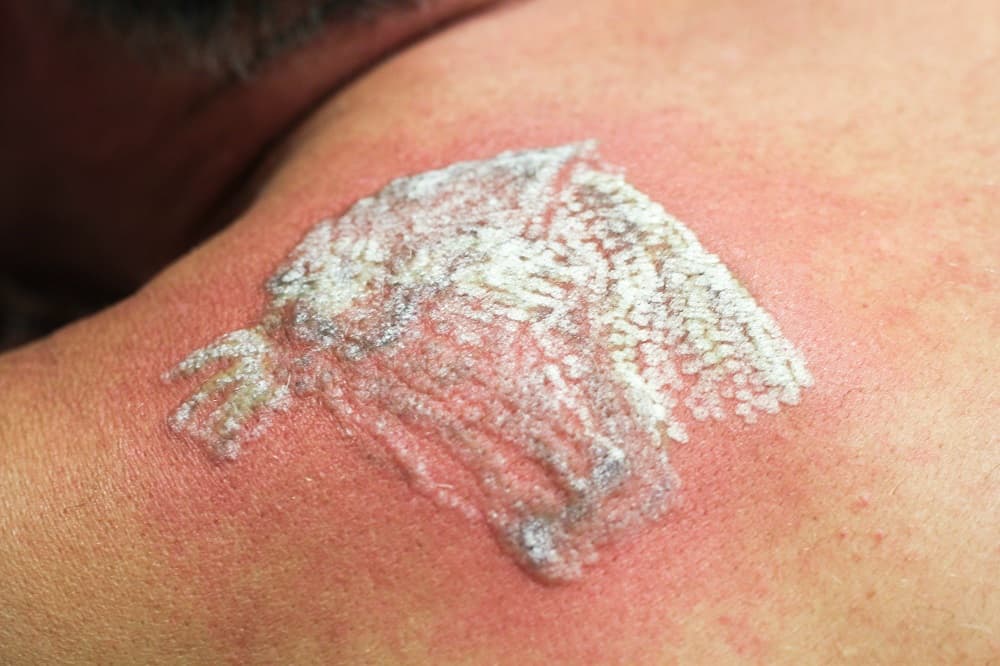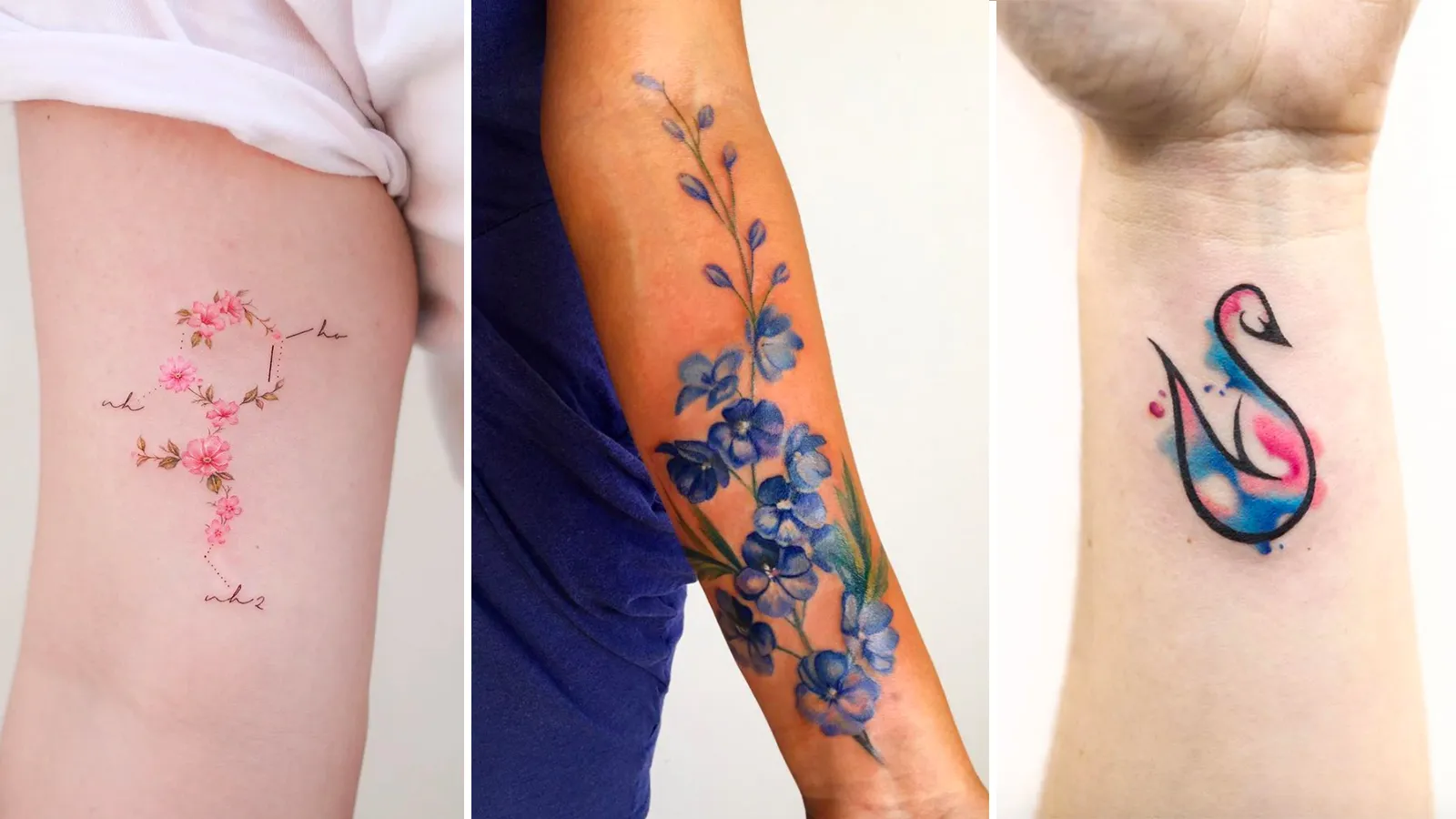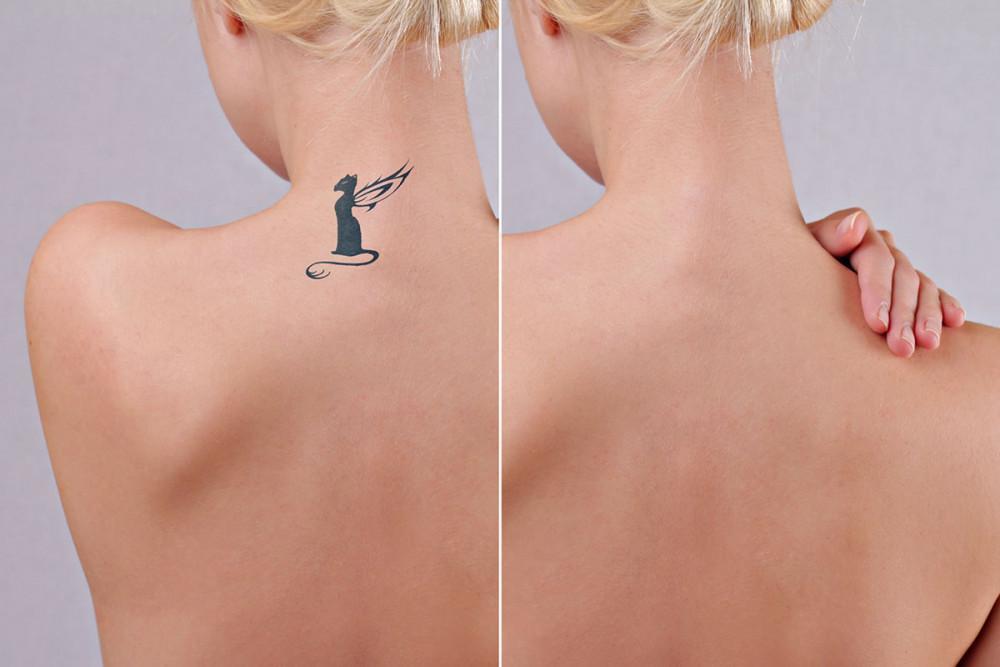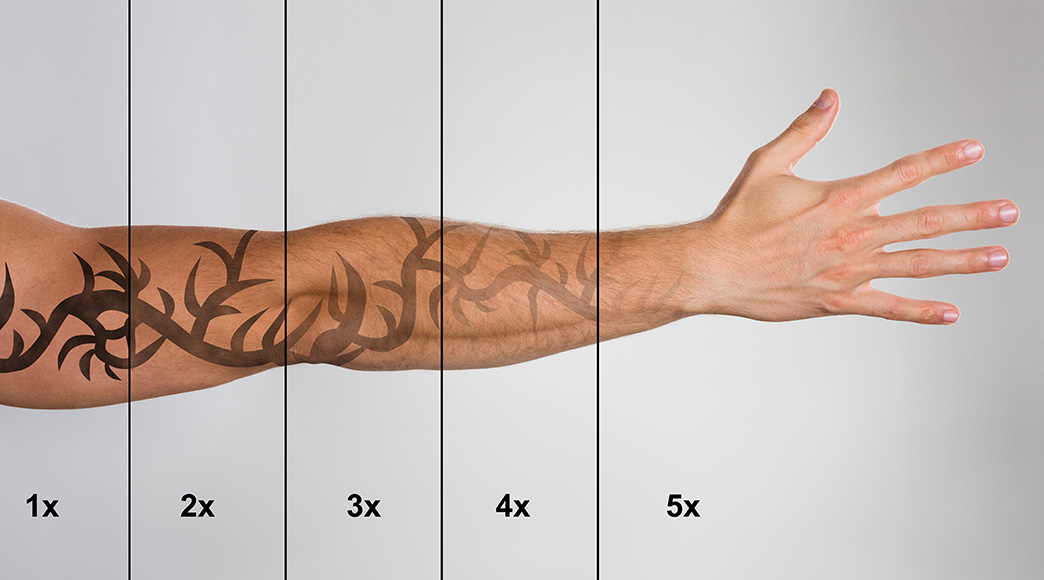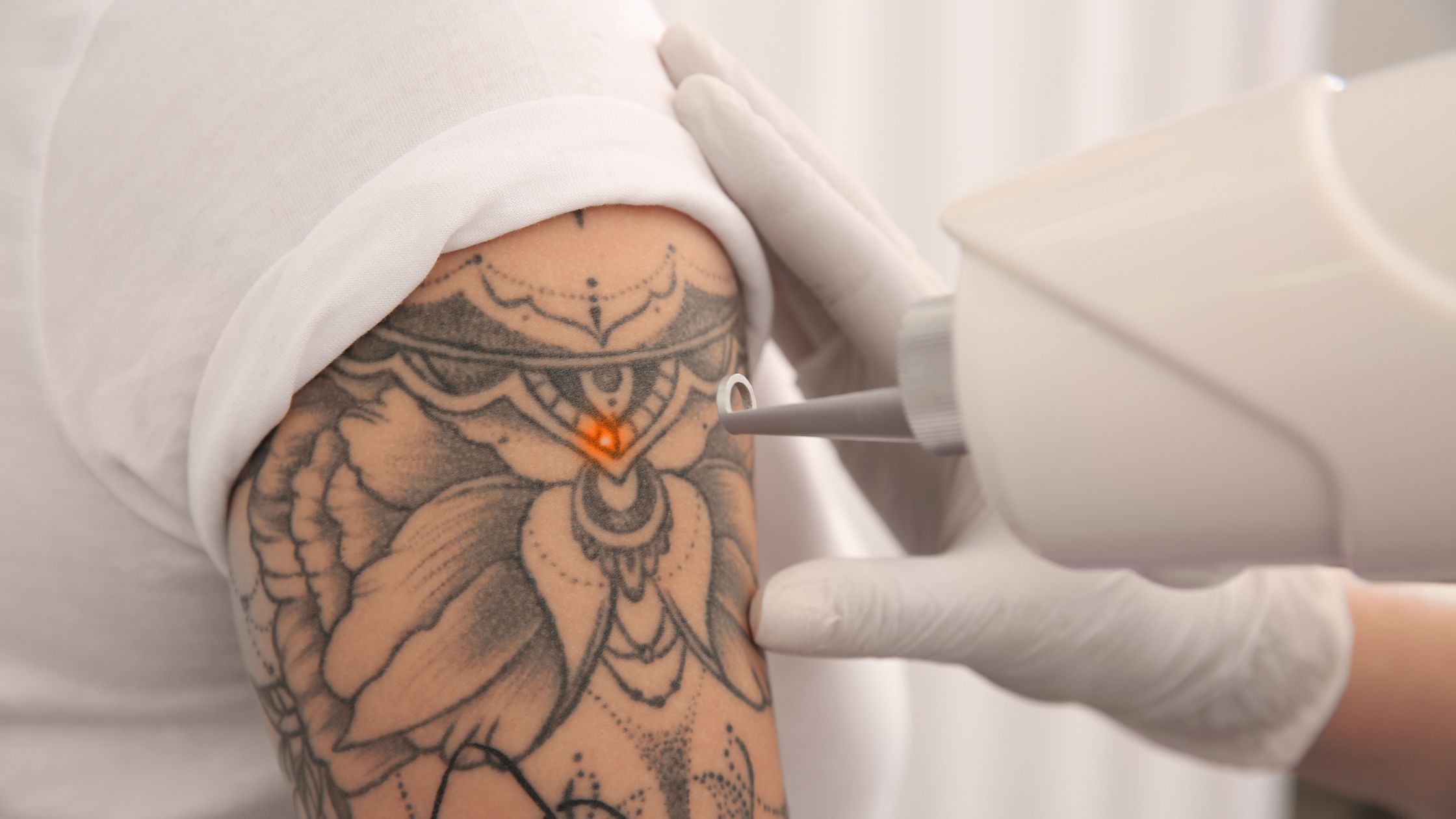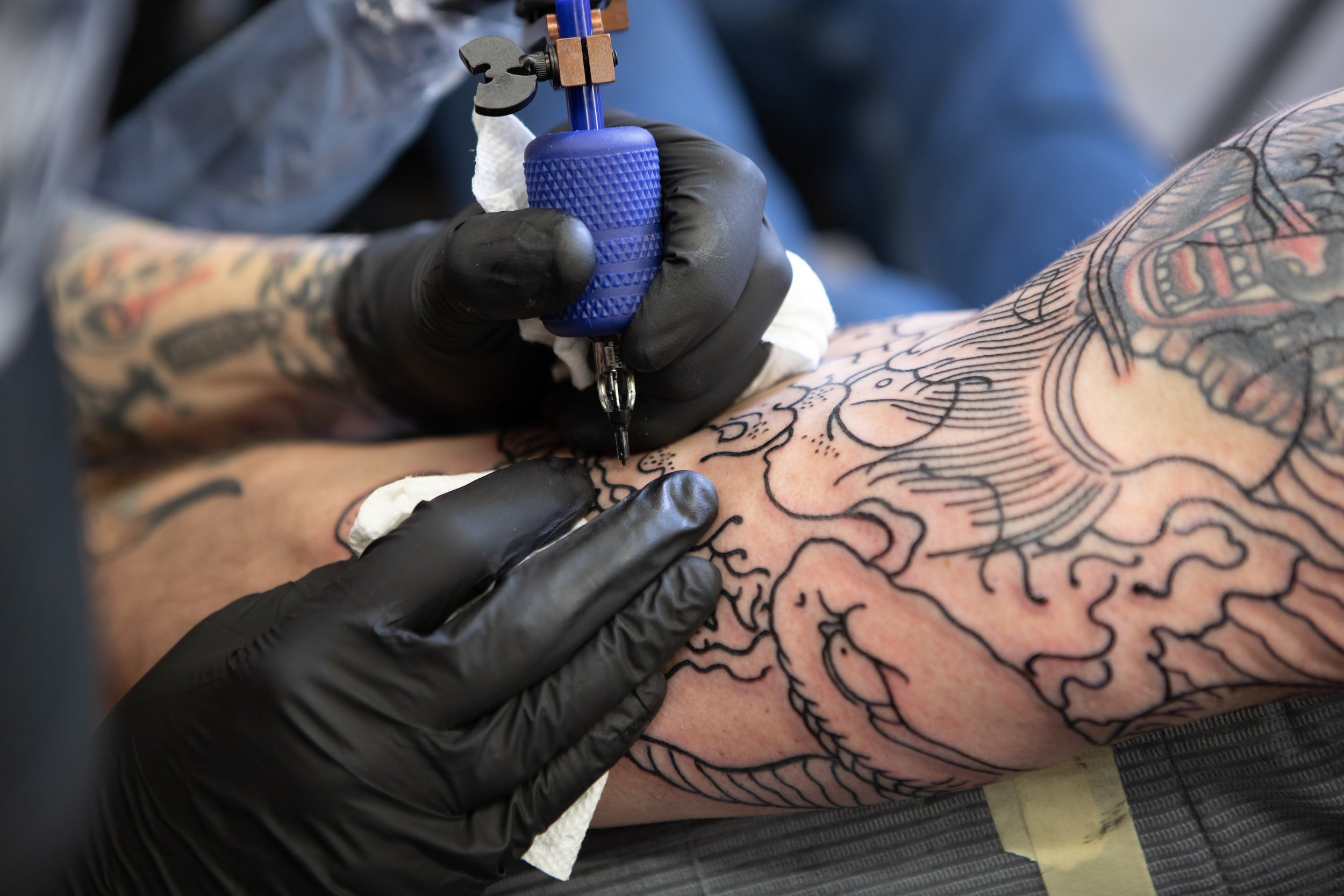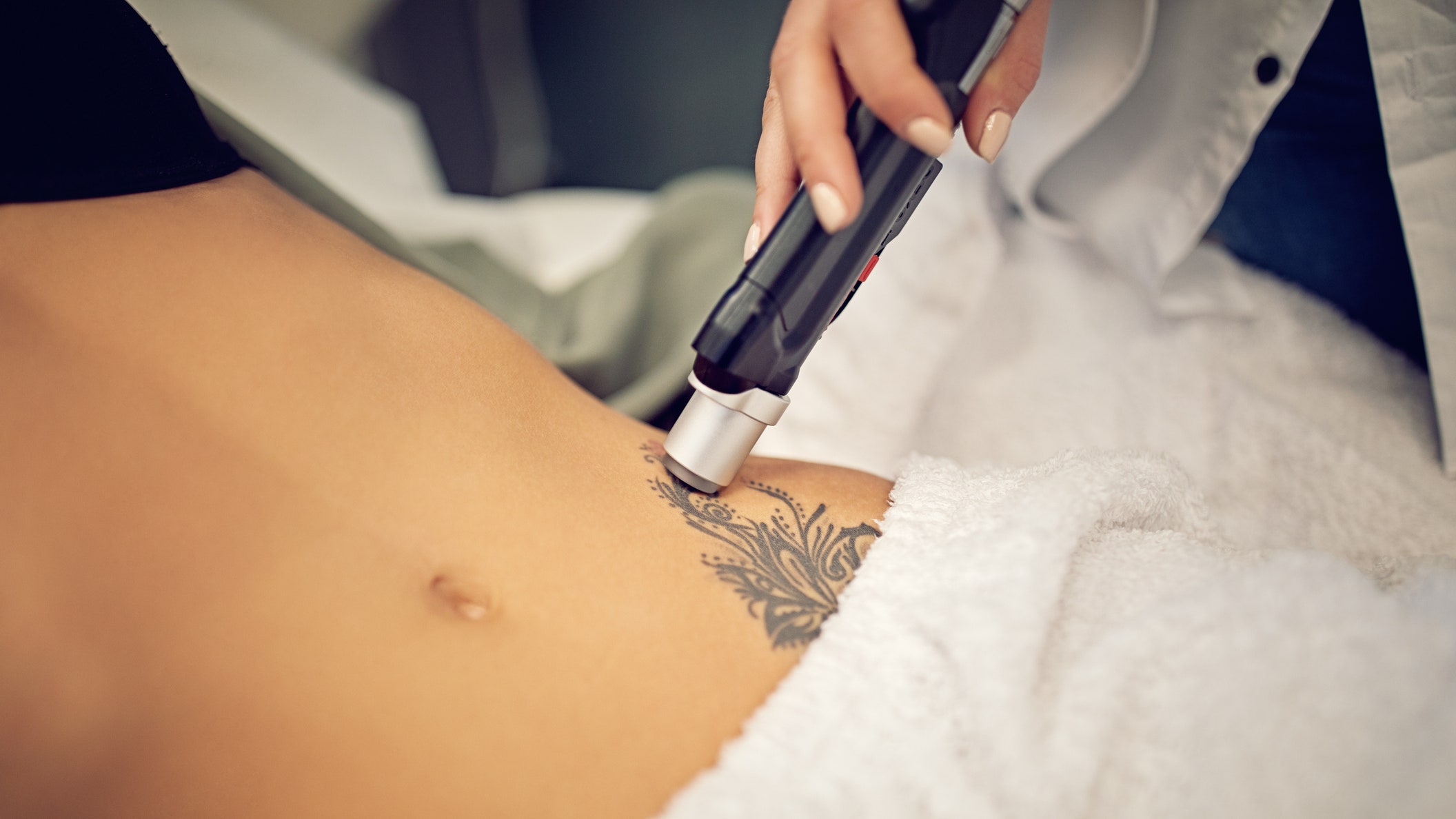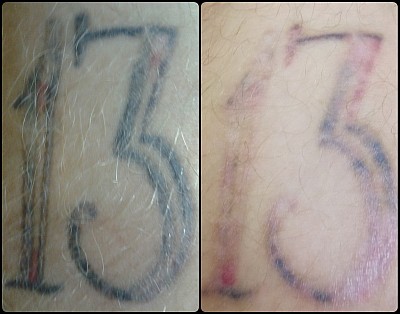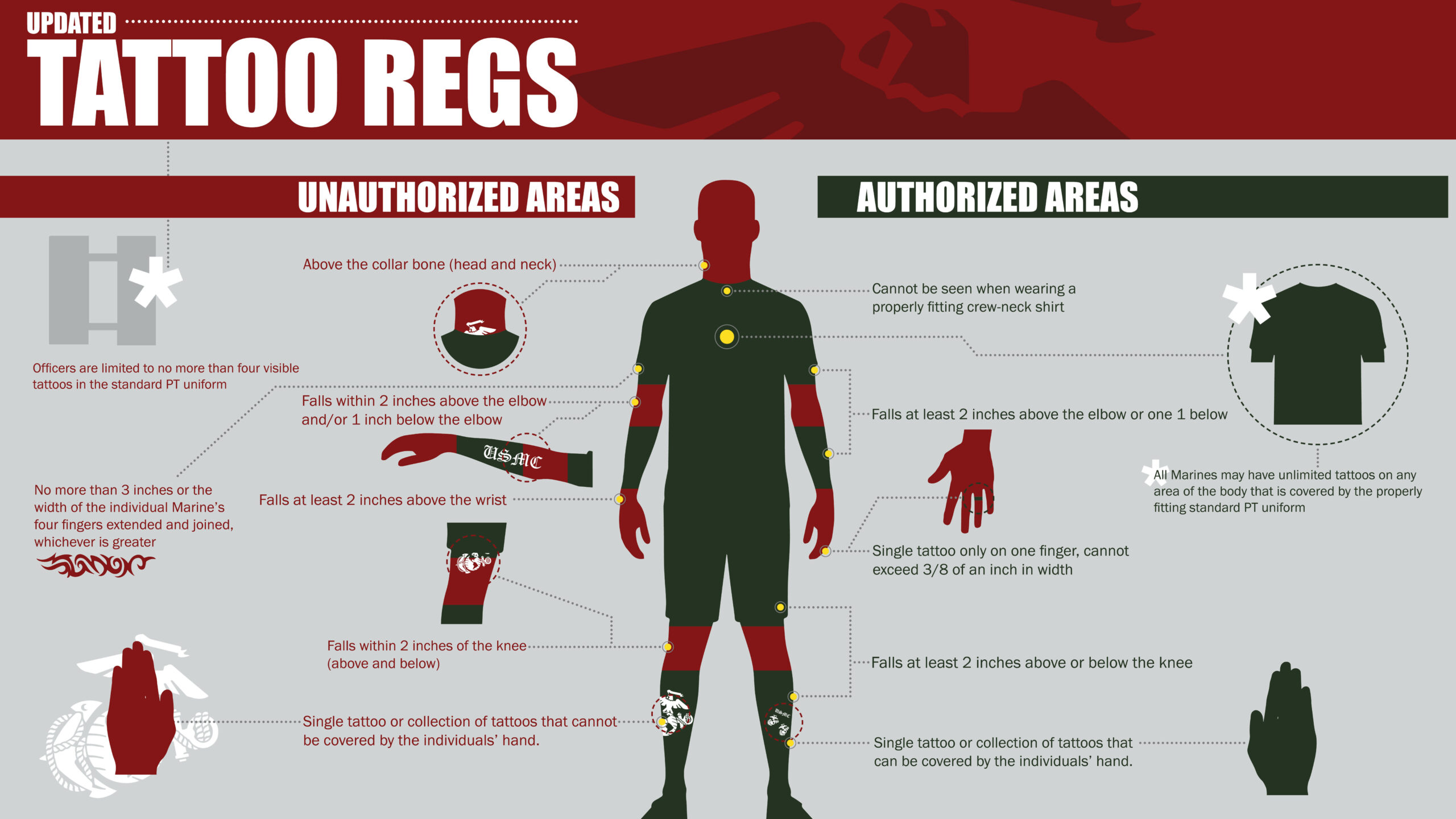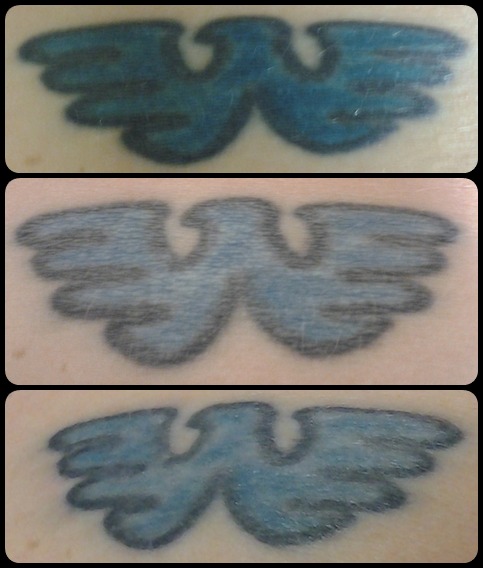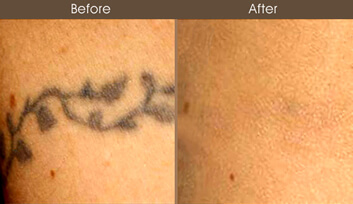Laser Birthmark/Sunspot Removal VS Laser Tattoo Removal
Birthmarks and sunspots can be removed with our Trinity Laser by Astanza as can tattoos of a wide variety of colors, but is there a difference in the treatment, healing process, results, etc?
As with laser tattoo removal, a laser of the proper frequency must be used to remove a birthmark or sunspot. Our ruby laser is very effective in removal of blue and green tattoo ink as well as removing brownish birthmarks and sunspots. For reddish birthmarks, such as port wine stains, our 532nm wavelength laser is a better choice as it would be for red, yellow, and orange tattoo ink.
For both tattoo removal and removal of naturally occurring skin pigment, such as birthmarks and sun spots, the laser targets the pigment in the skin and shatters it into smaller particles so that your immune system can then do the removal. In both instances the treated area becomes red and inflamed. With sunspot or birthmark removal, the redness and inflammation is typically less than what we see with tattoo removal.
“Laser snow” (immediate and extremely temporary whitening of the treated area due to steam trapped just below the skin’s surface) is a common occurrence with both laser tattoo removal and laser pigmentation removal, again however, a treated tattoo tends to produce more “laser snow” than a treated sunspot or birthmark.
After pigment removal treatment, the treated area may continue to redden and swell for a few hours and sometimes into the next day. After 24 hours the redness and swelling should begin to lessen. The treated area will stay darker than it was prior to treatment for a few days to a few weeks. You may develop a scab or just a slightly rough skin. This along with the darker color will slough off over those few days to few weeks. On the flip side, tattoo removal patients will also notice increased redness and swelling over the next day or so after treatment, but again after 24 hours the redness and swelling should begin to decrease. Depending on the colors in the tattoo, the treated area may blister or scab. This can take a few weeks or more to completely heal. In both cases the area must be completely healed before a subsequent treatment can be performed.
In many cases naturally occurring skin pigment is not as deep or dense in the skin as tattoo ink, therefore often times a lower laser setting can be used and fewer treatments may be needed for pigment removal as opposed to laser tattoo removal. On average a tattoo can be removed in 5-10 treatments whereas a birthmark or age spot may be removed in as few as 1-3 treatments. These numbers are simply an average range. More or fewer treatments may be necessary depending on a wide array of factors from density of the pigment, location of the pigment, the patient’s immune system, and so much more.





